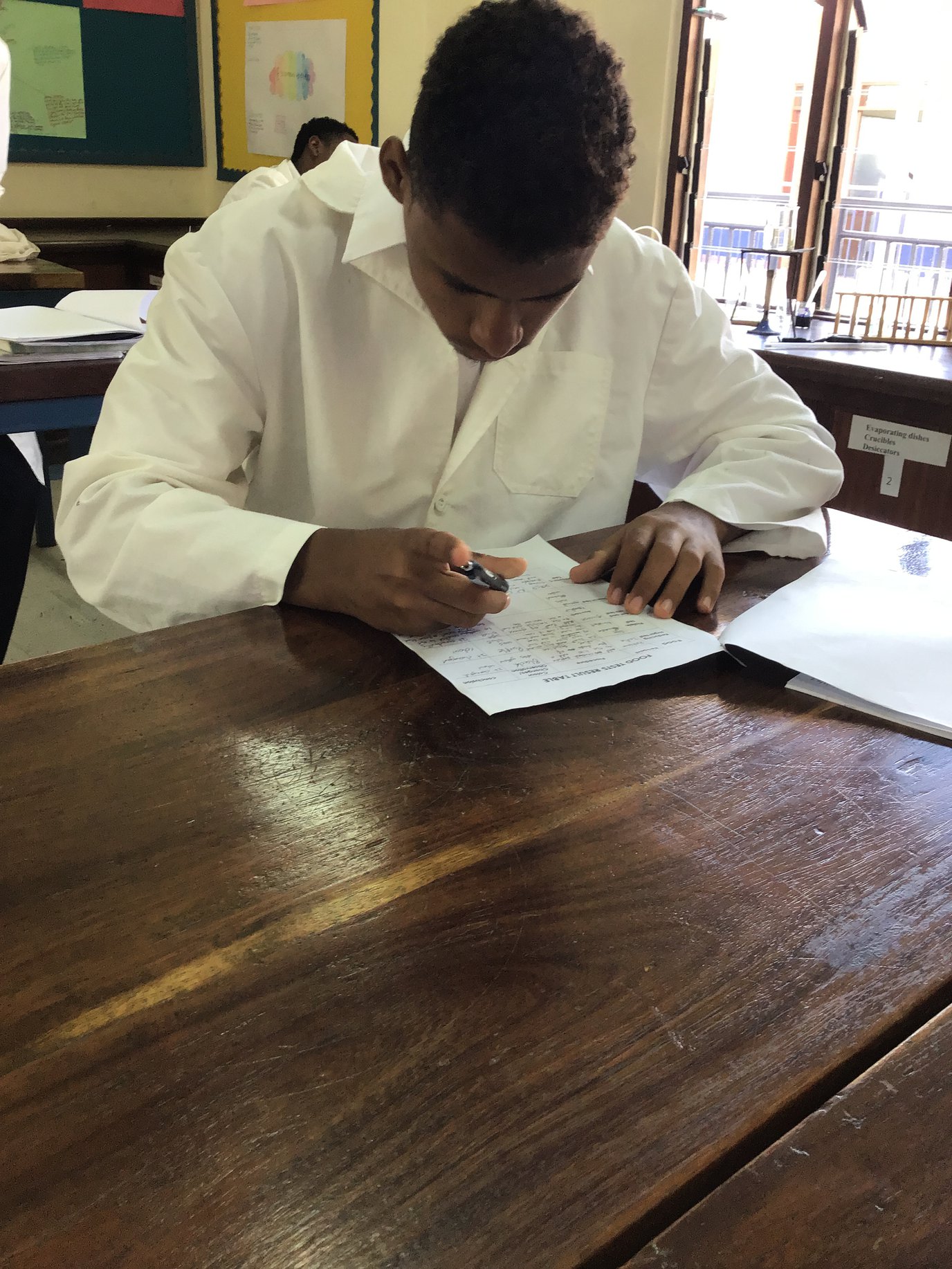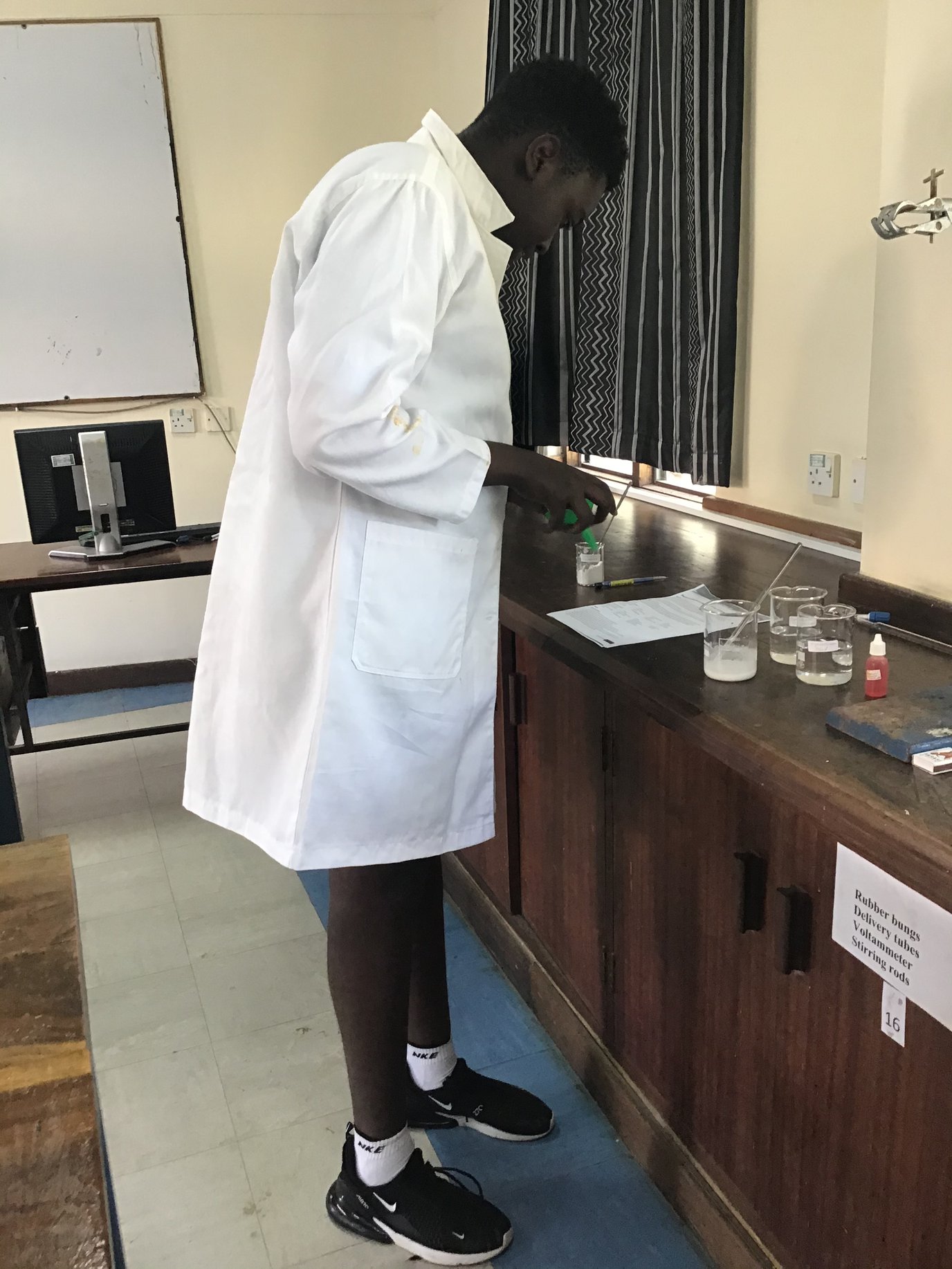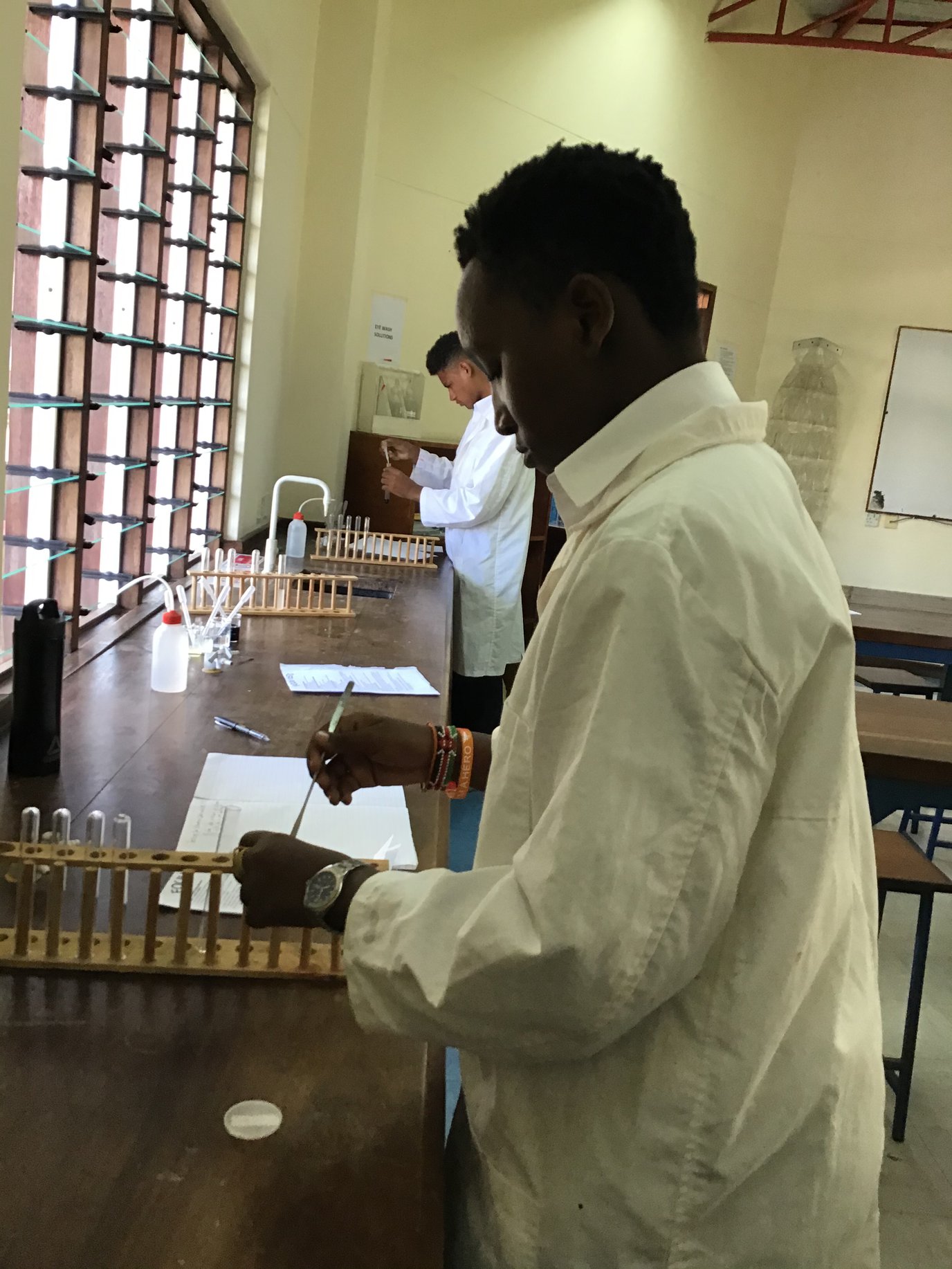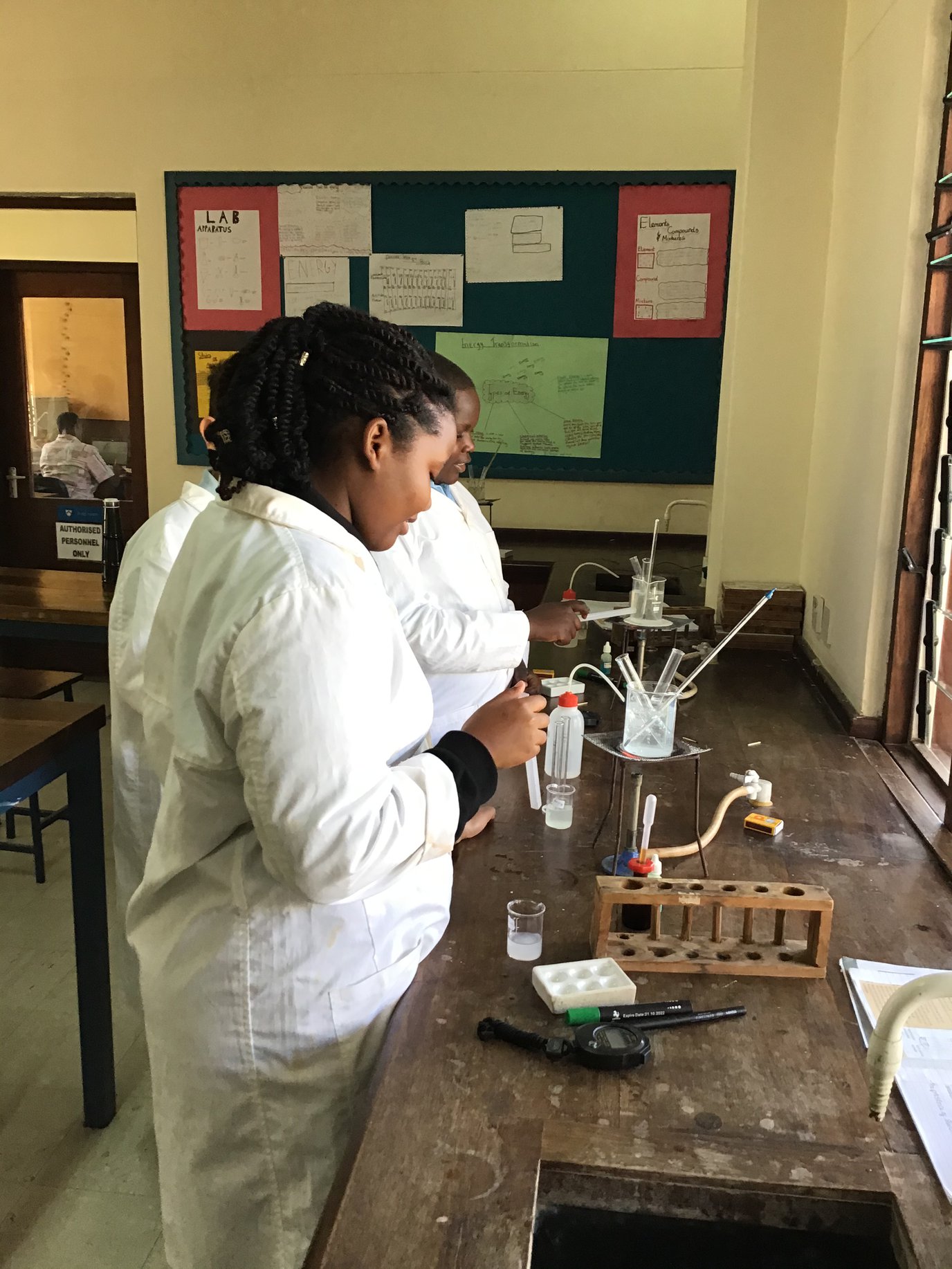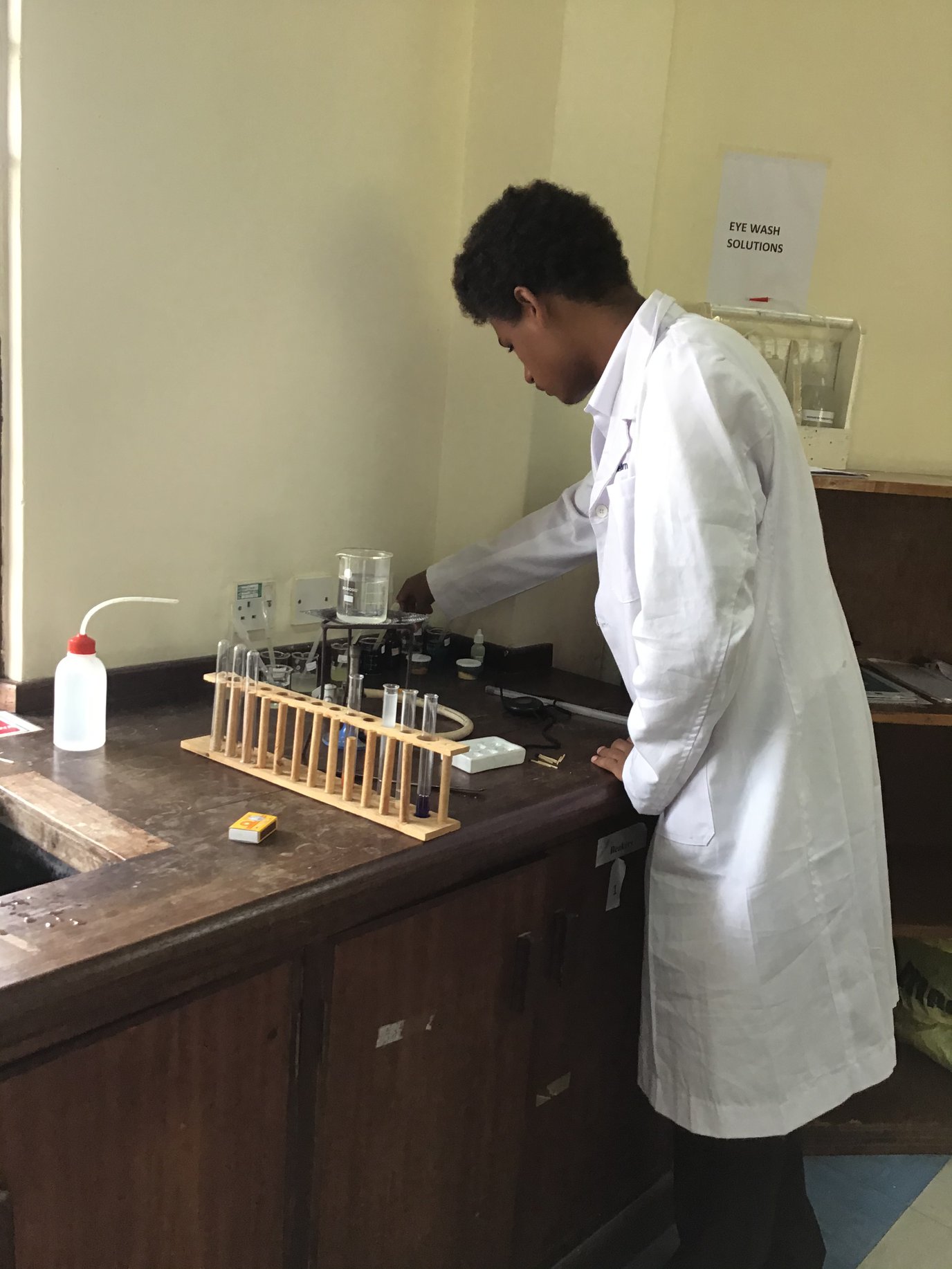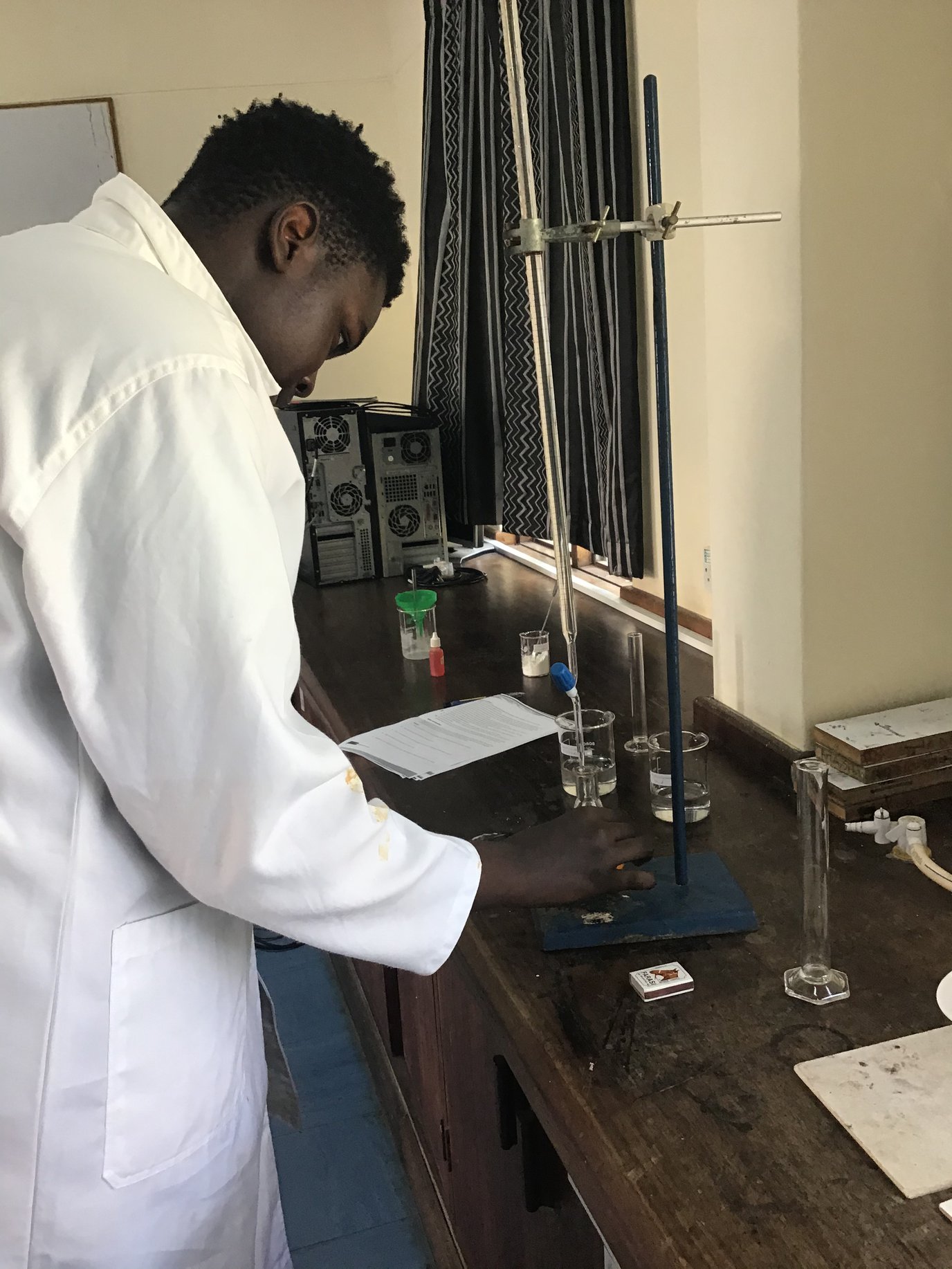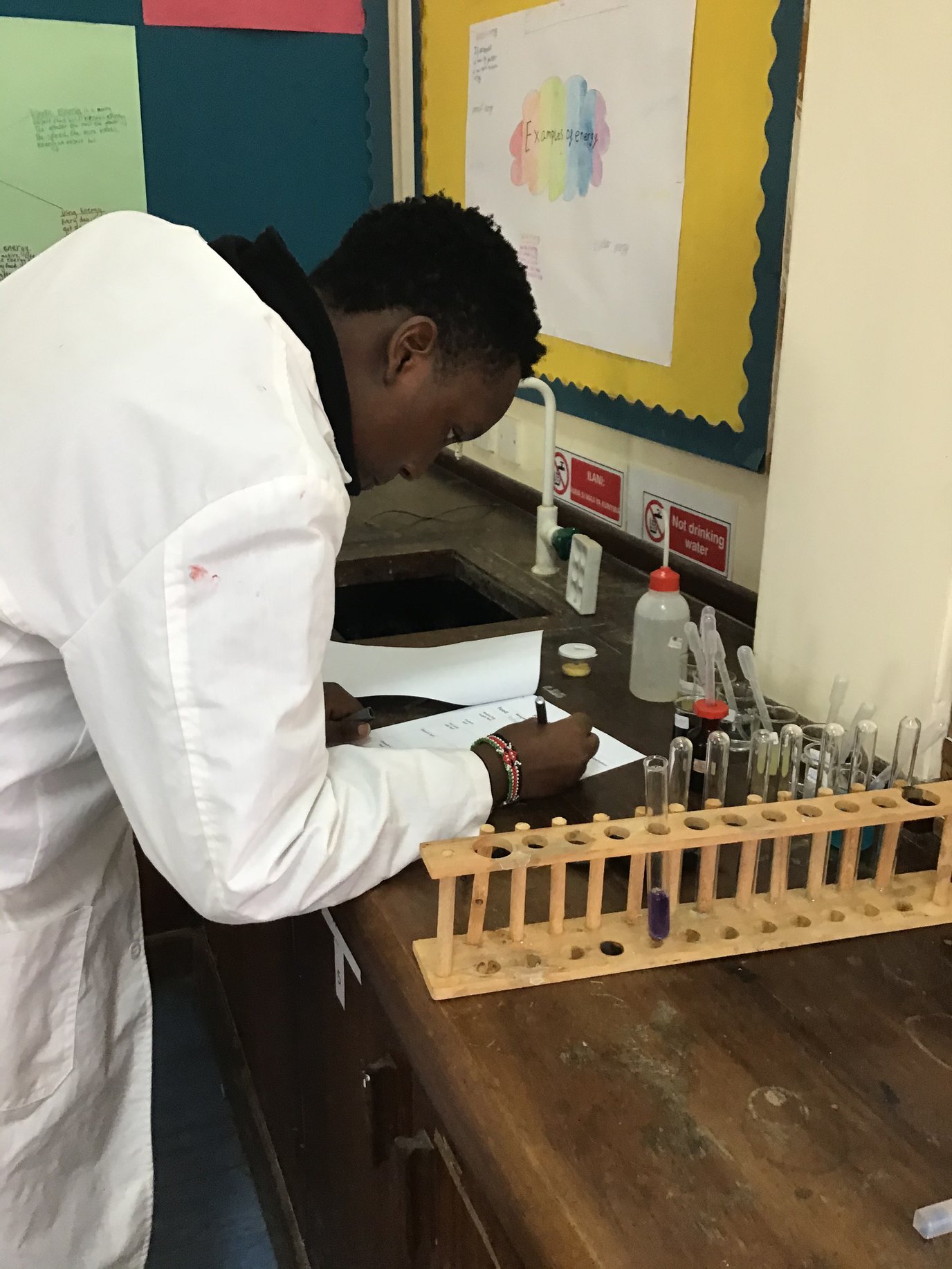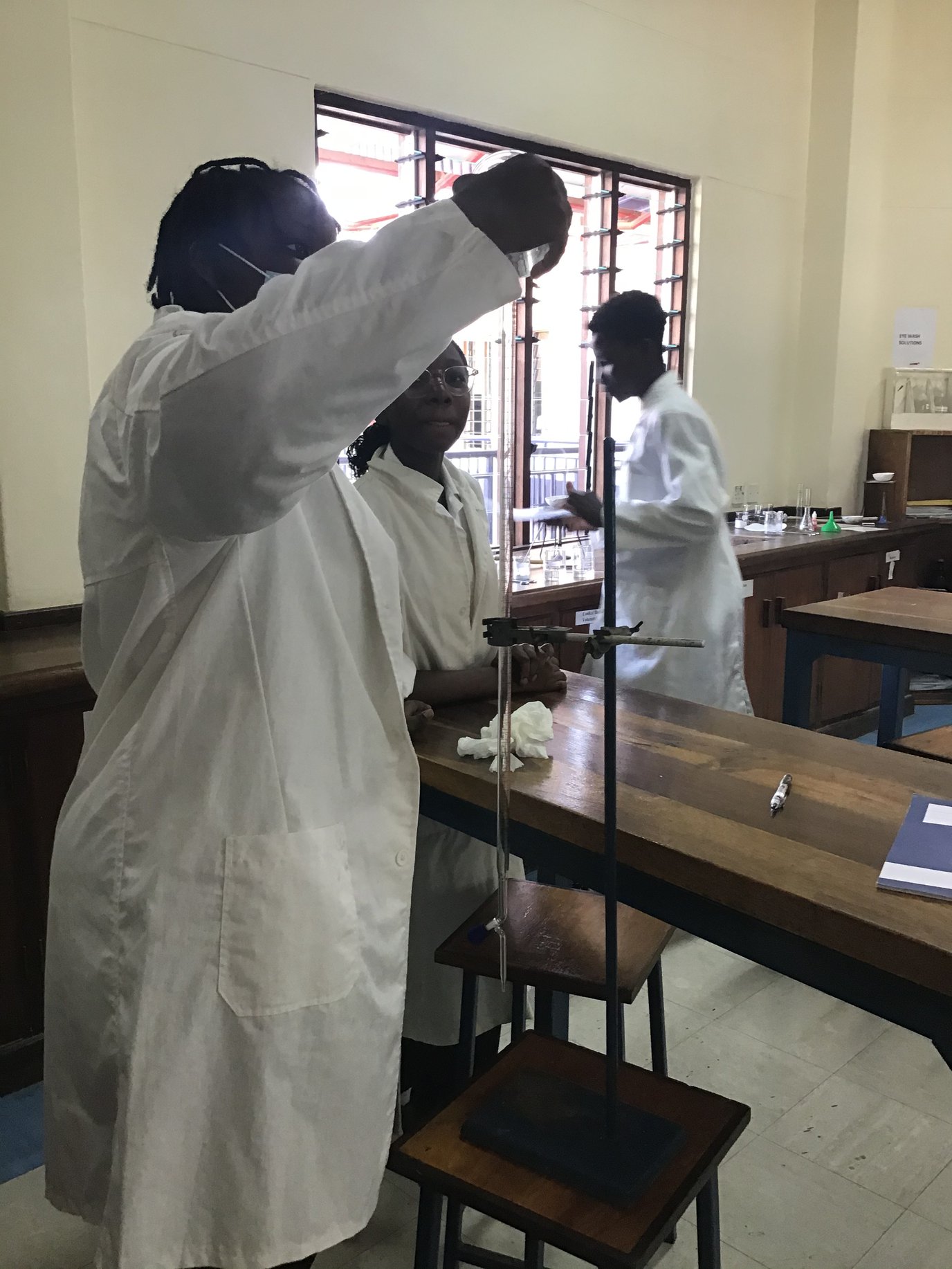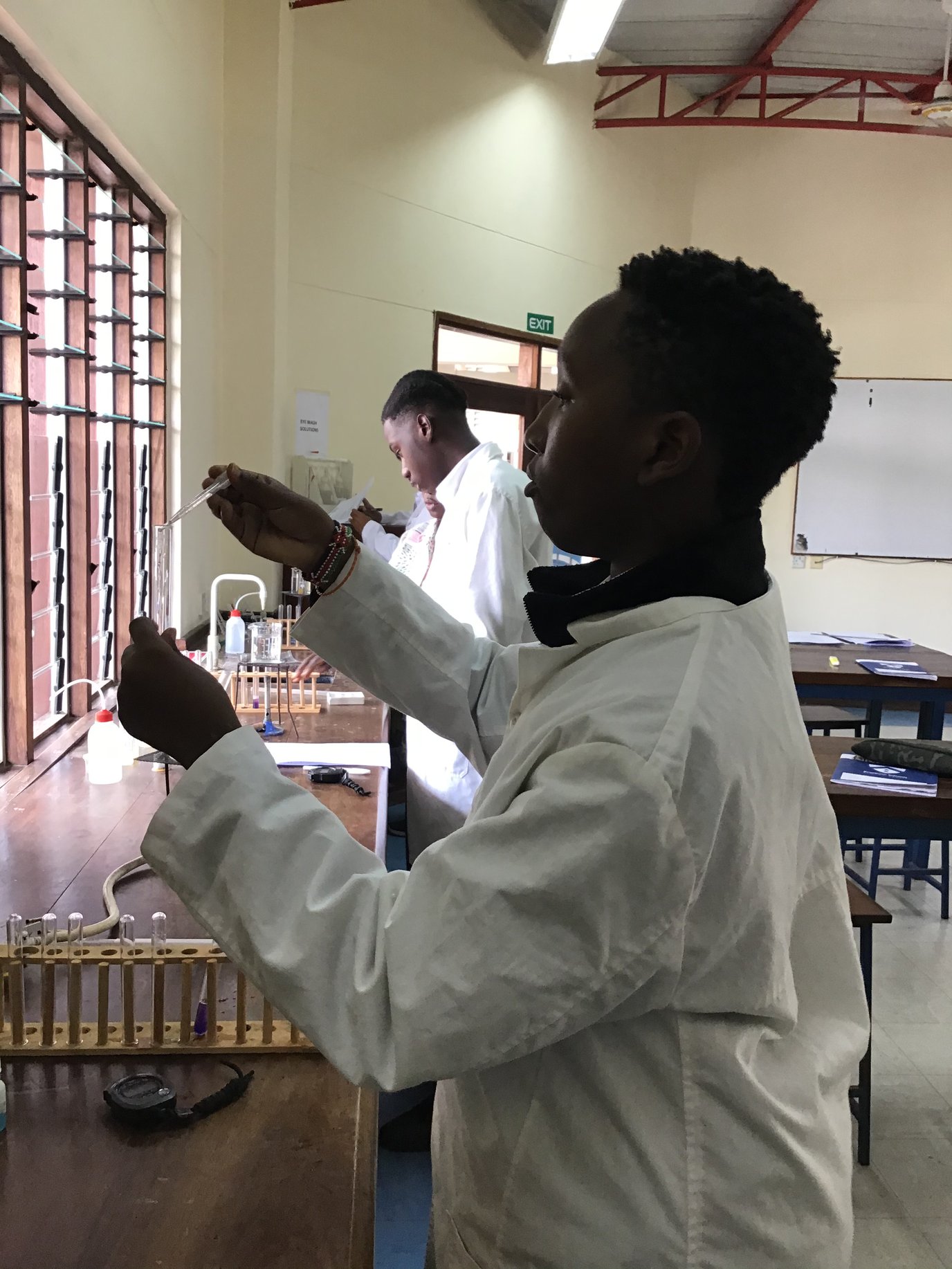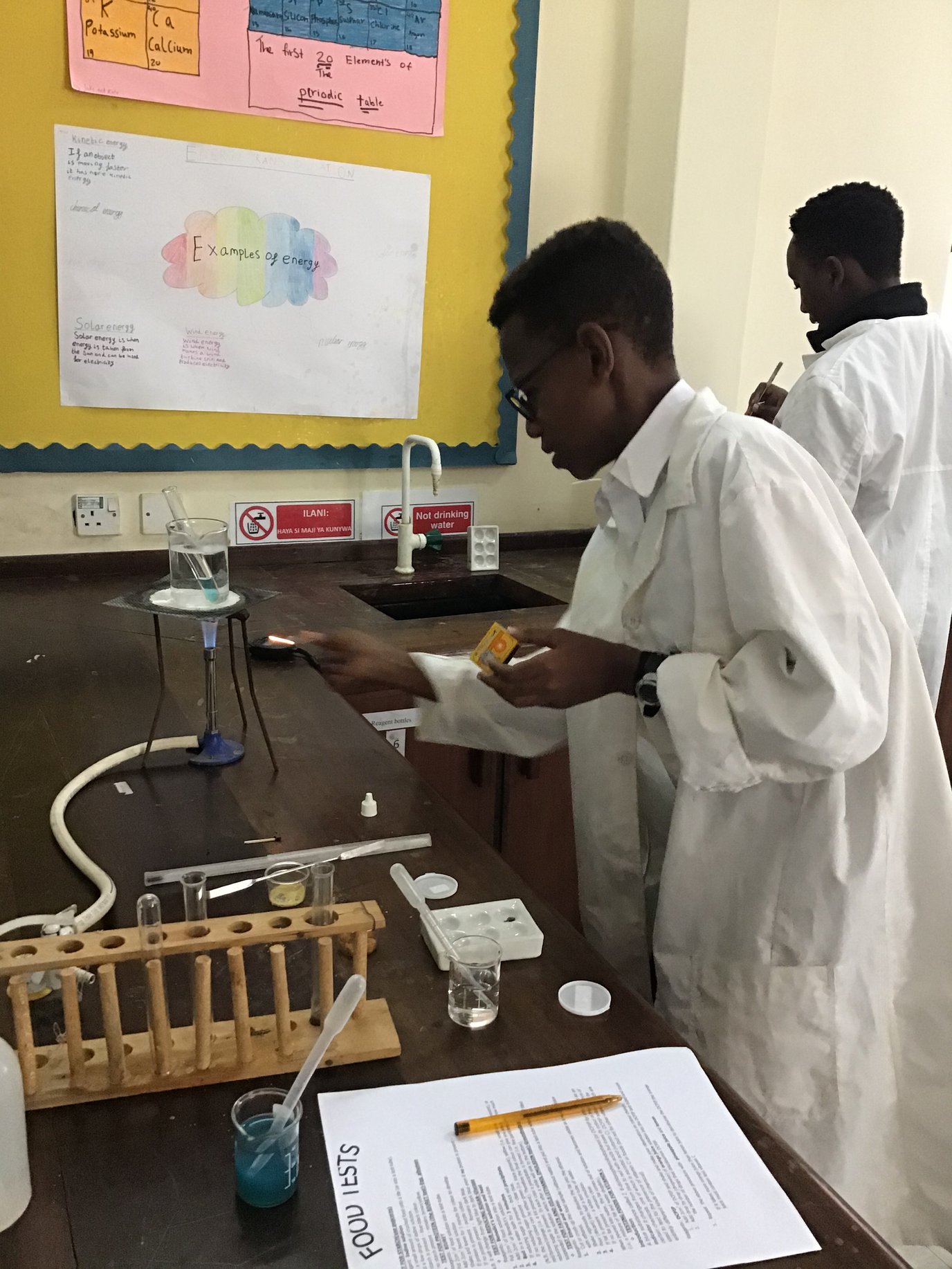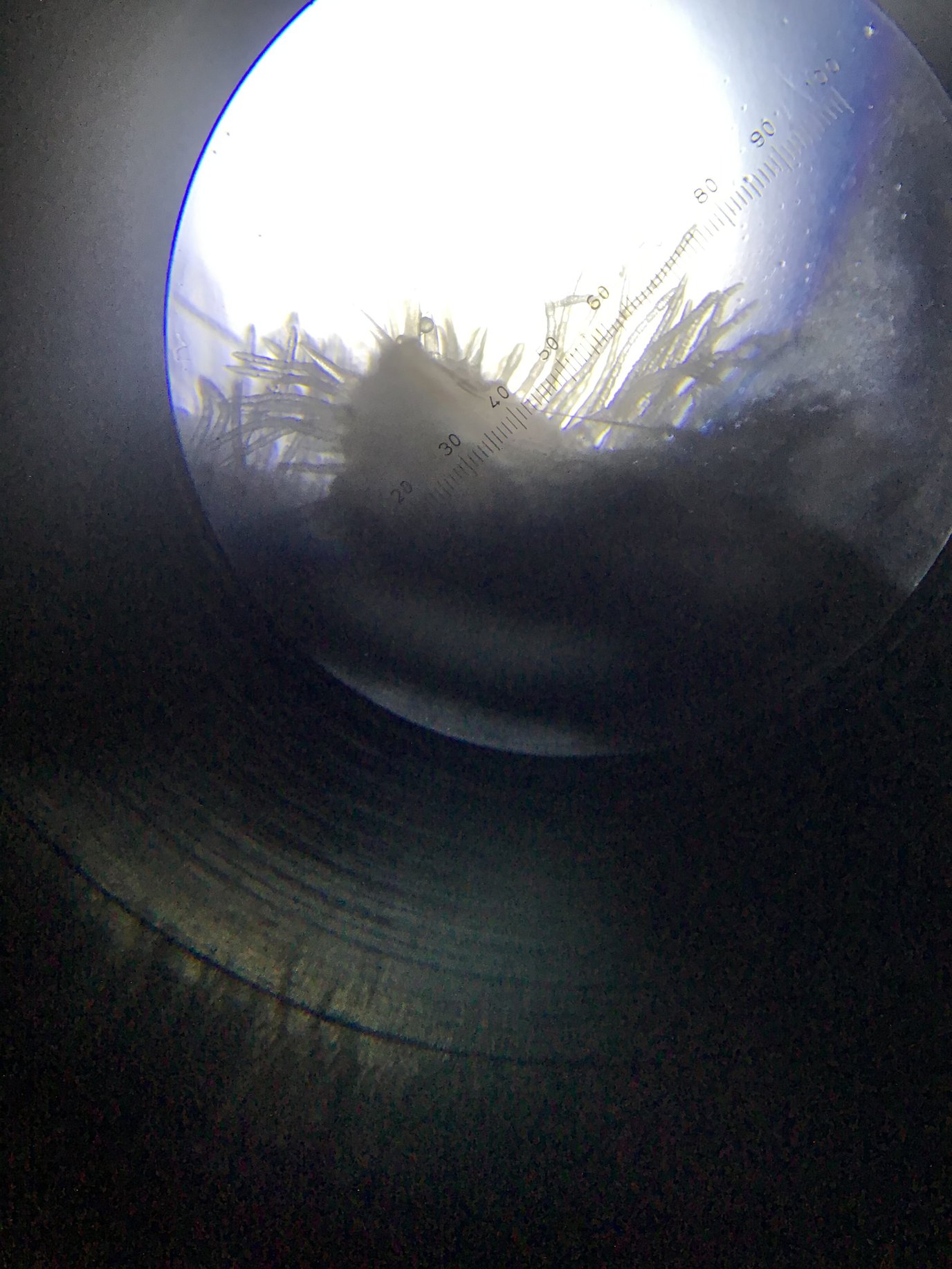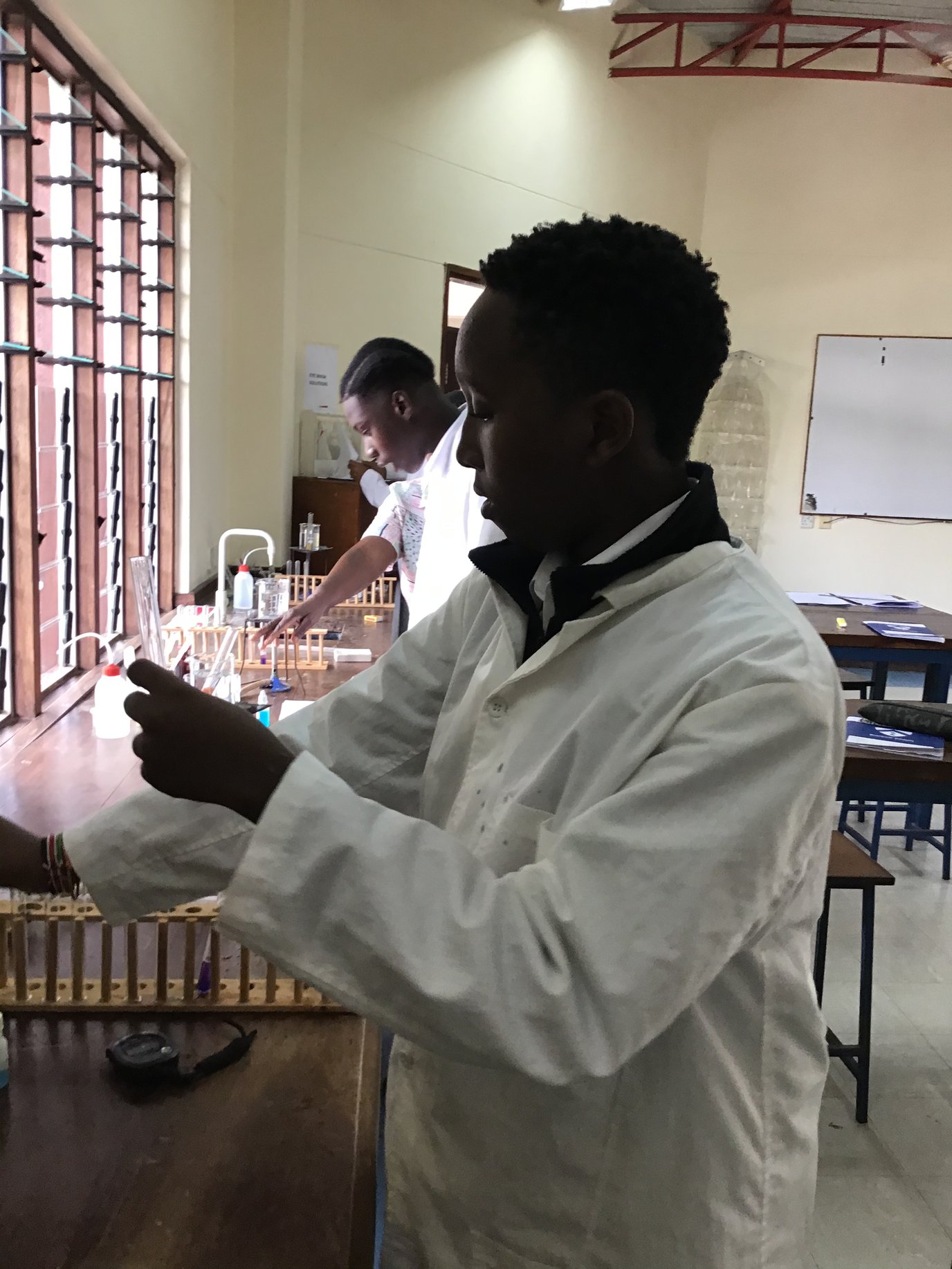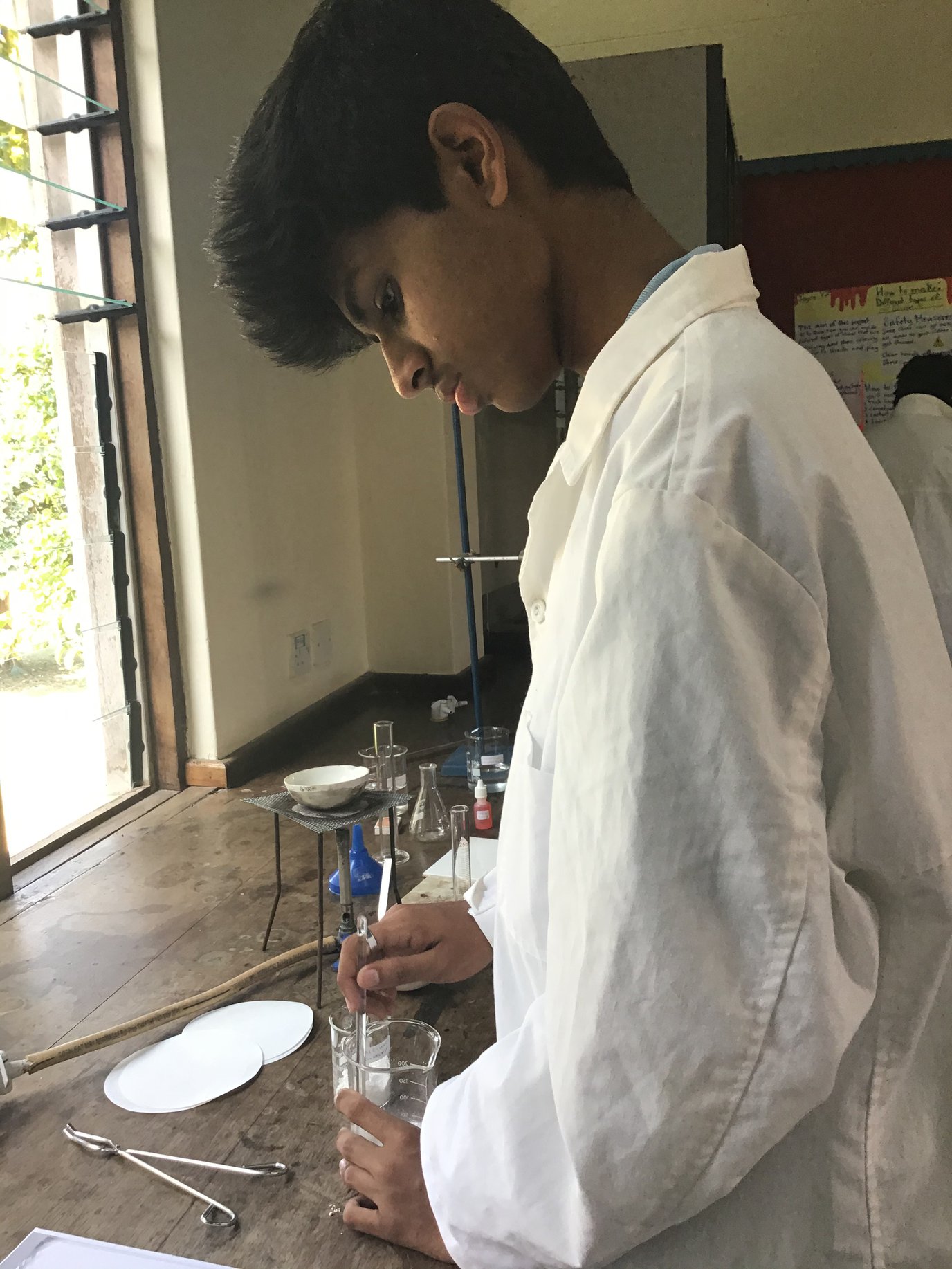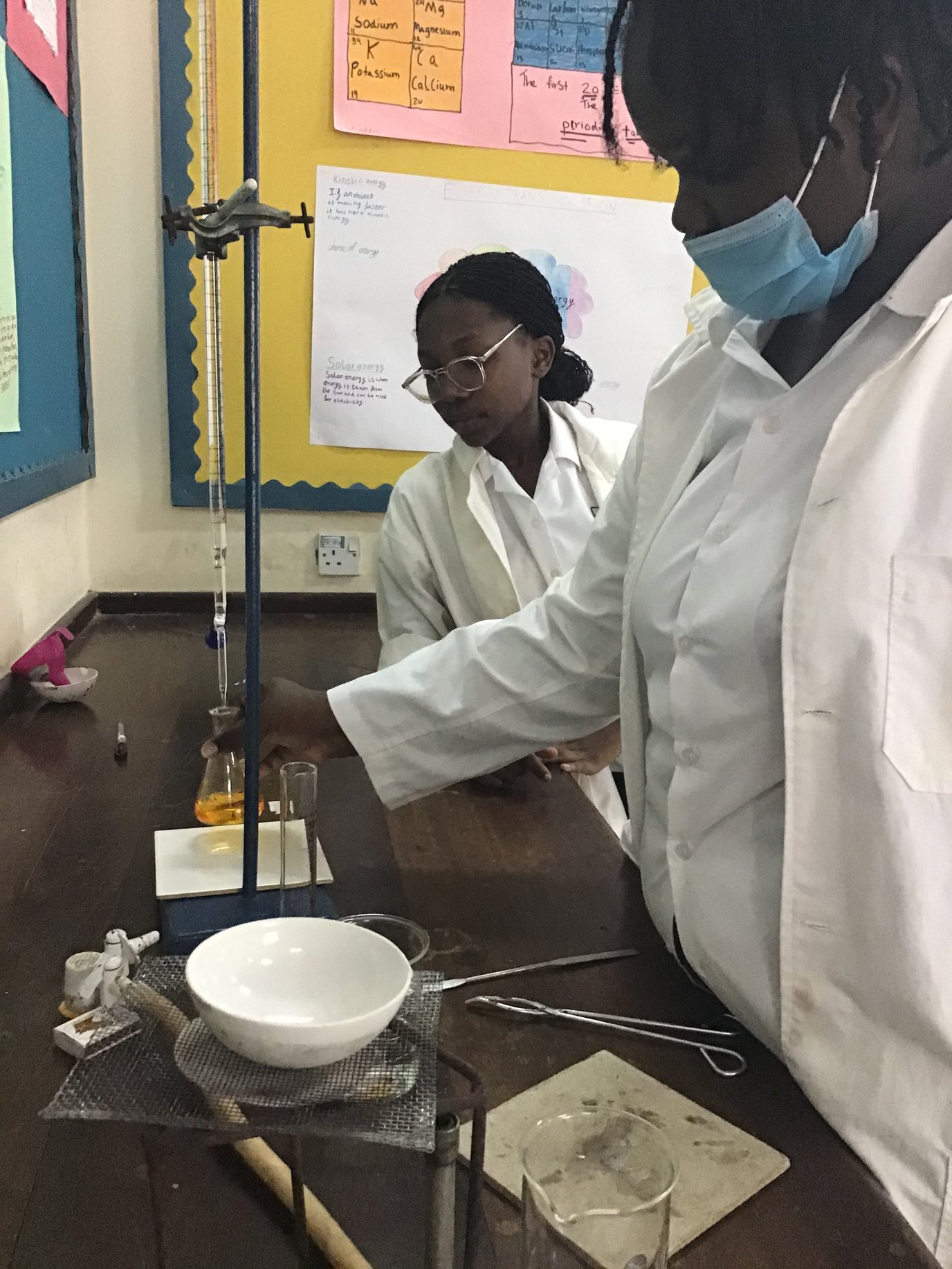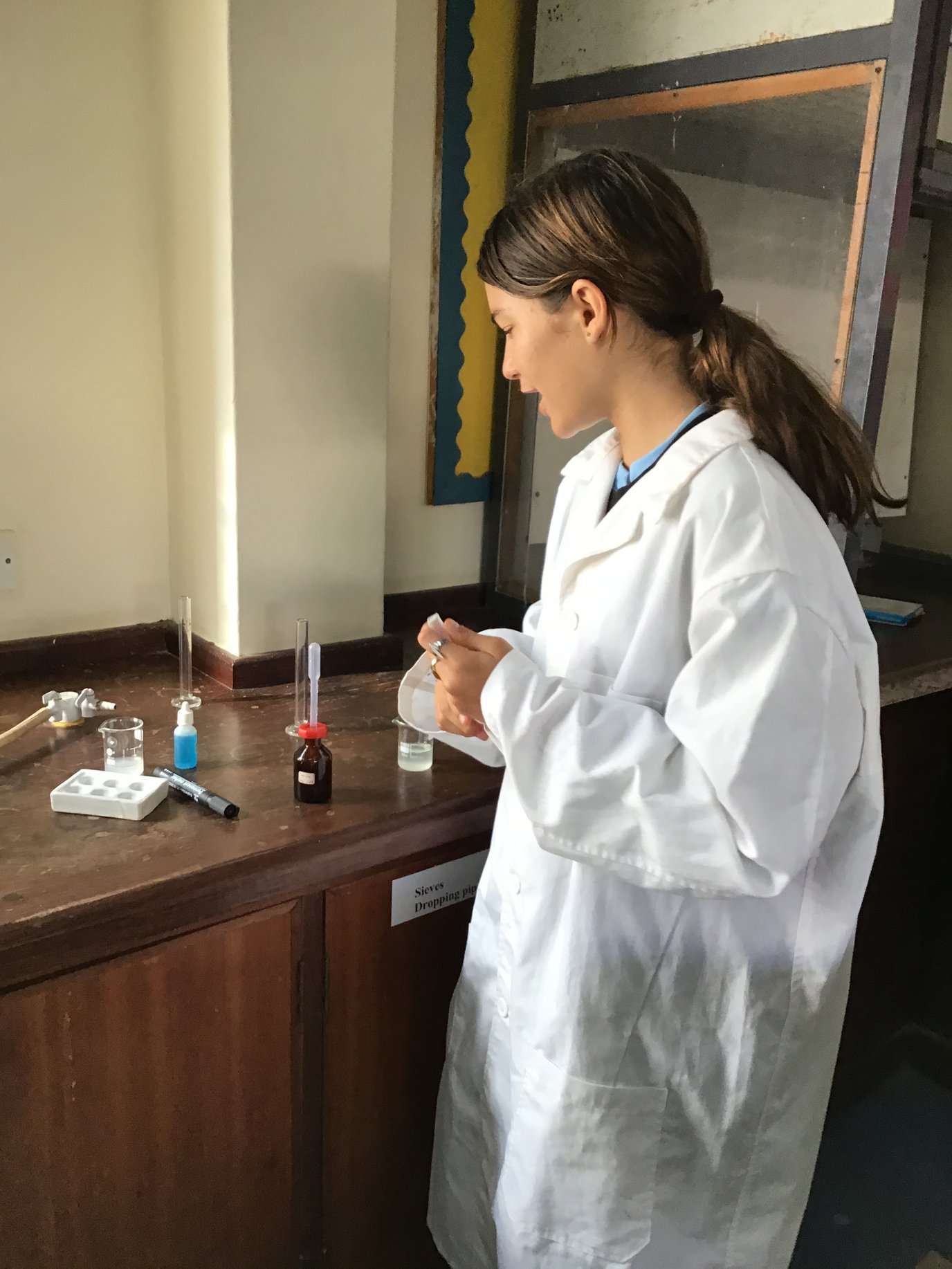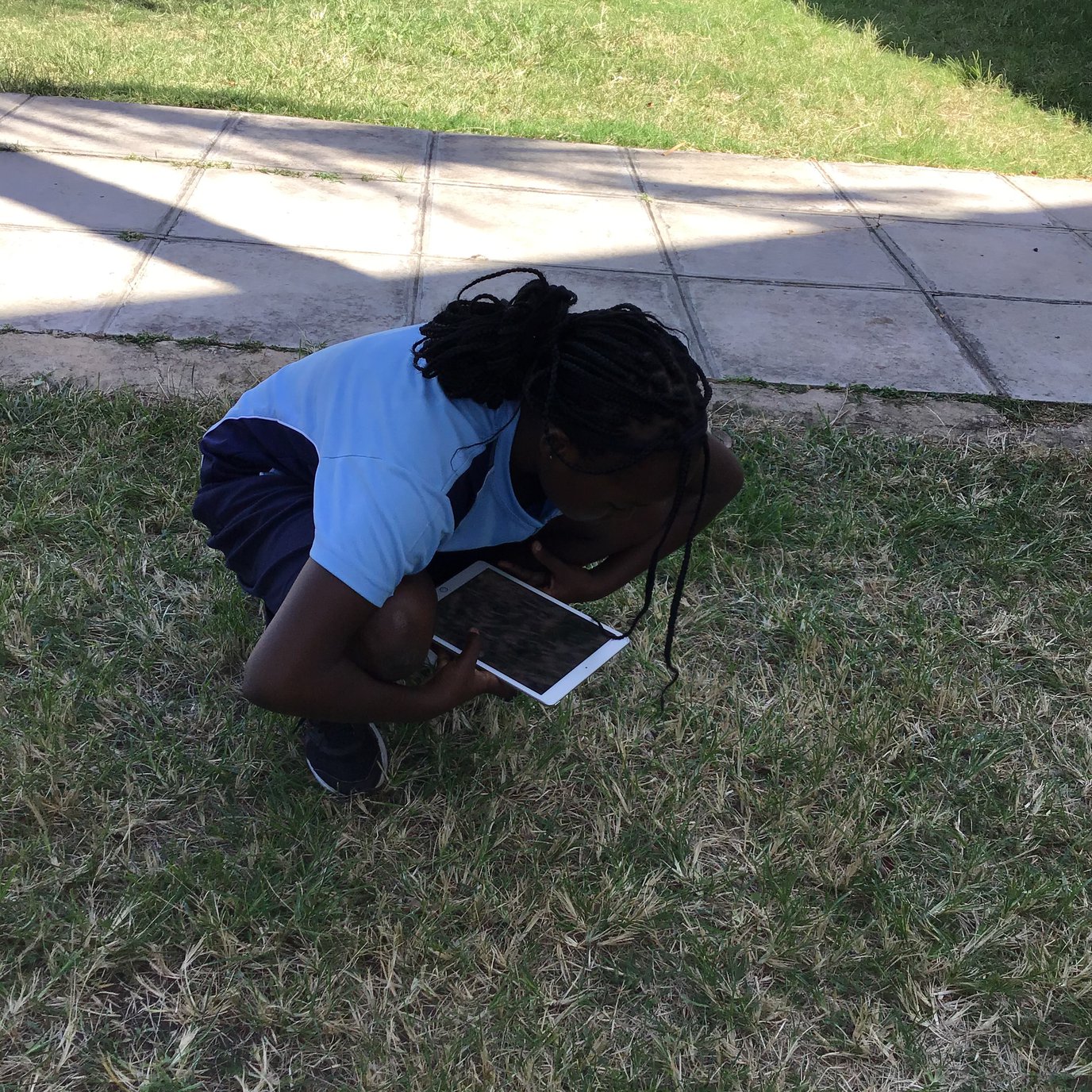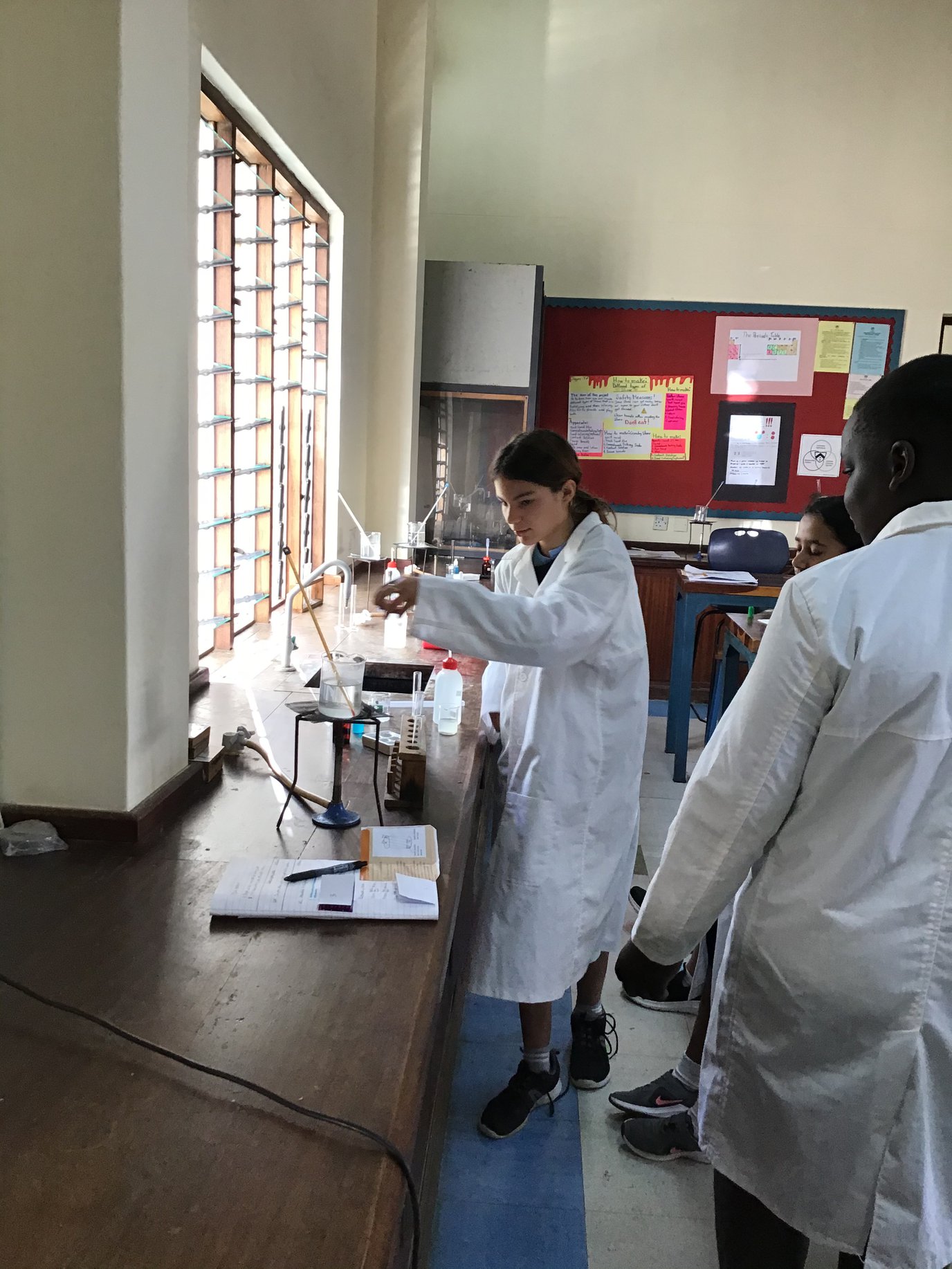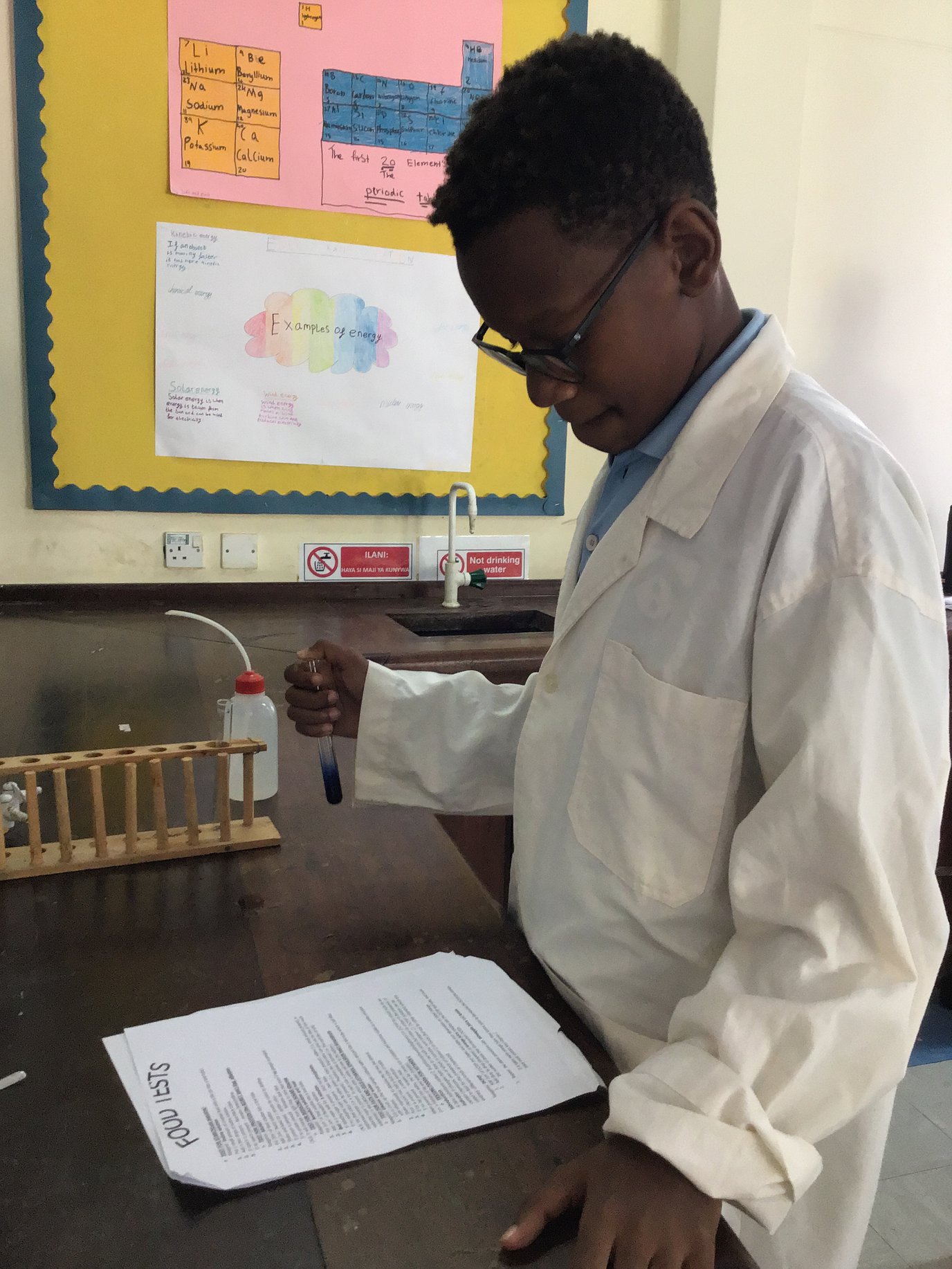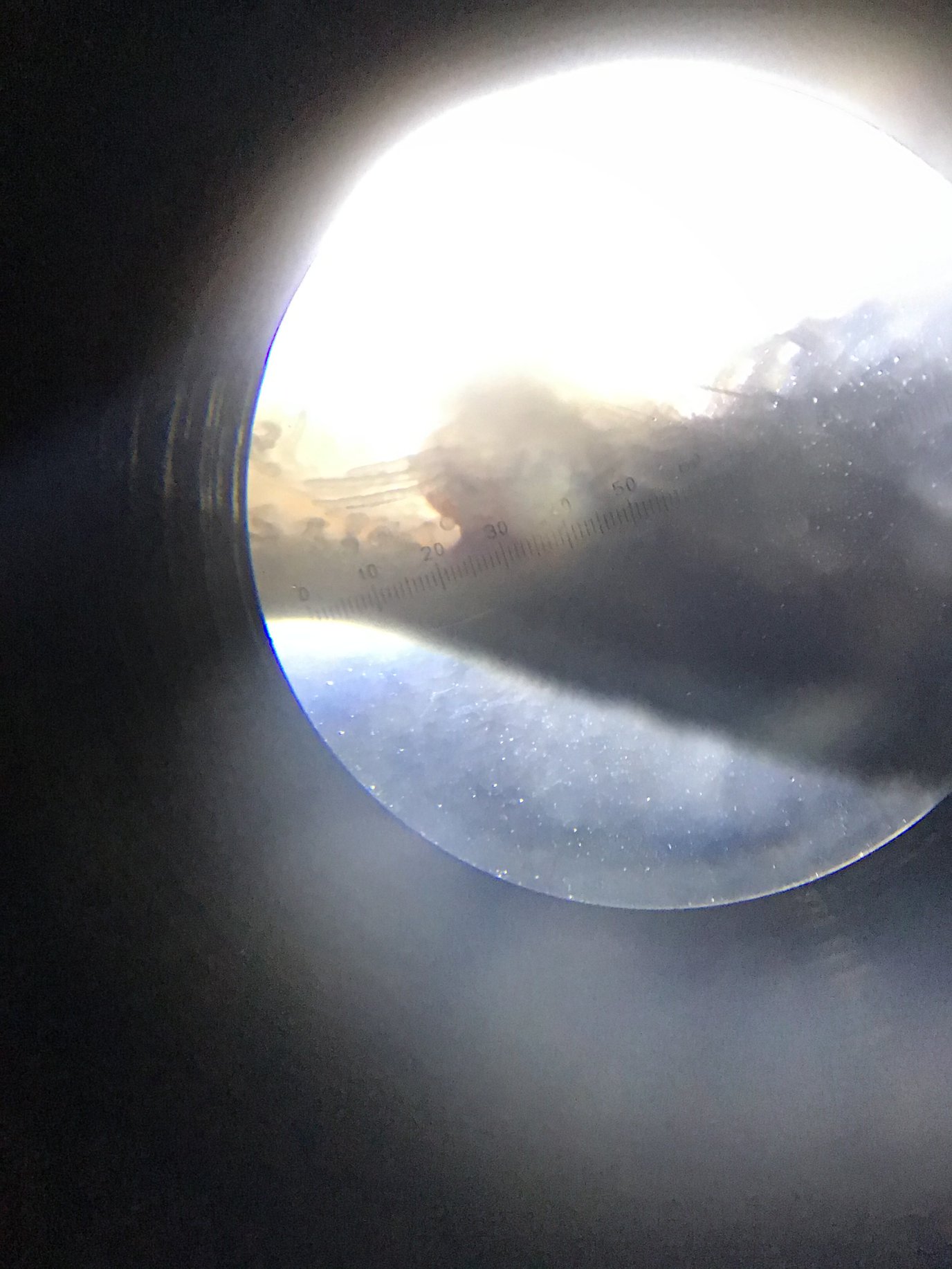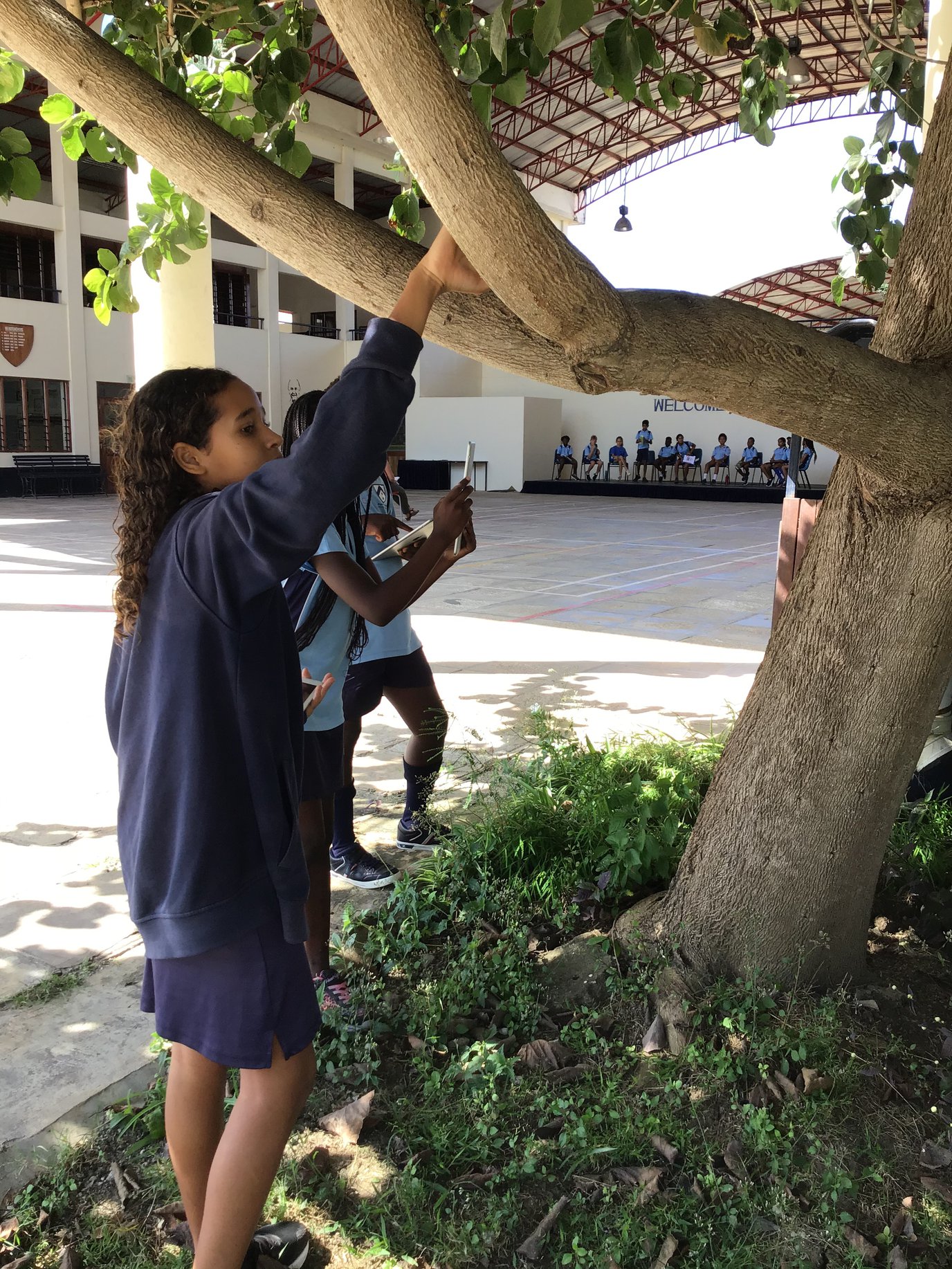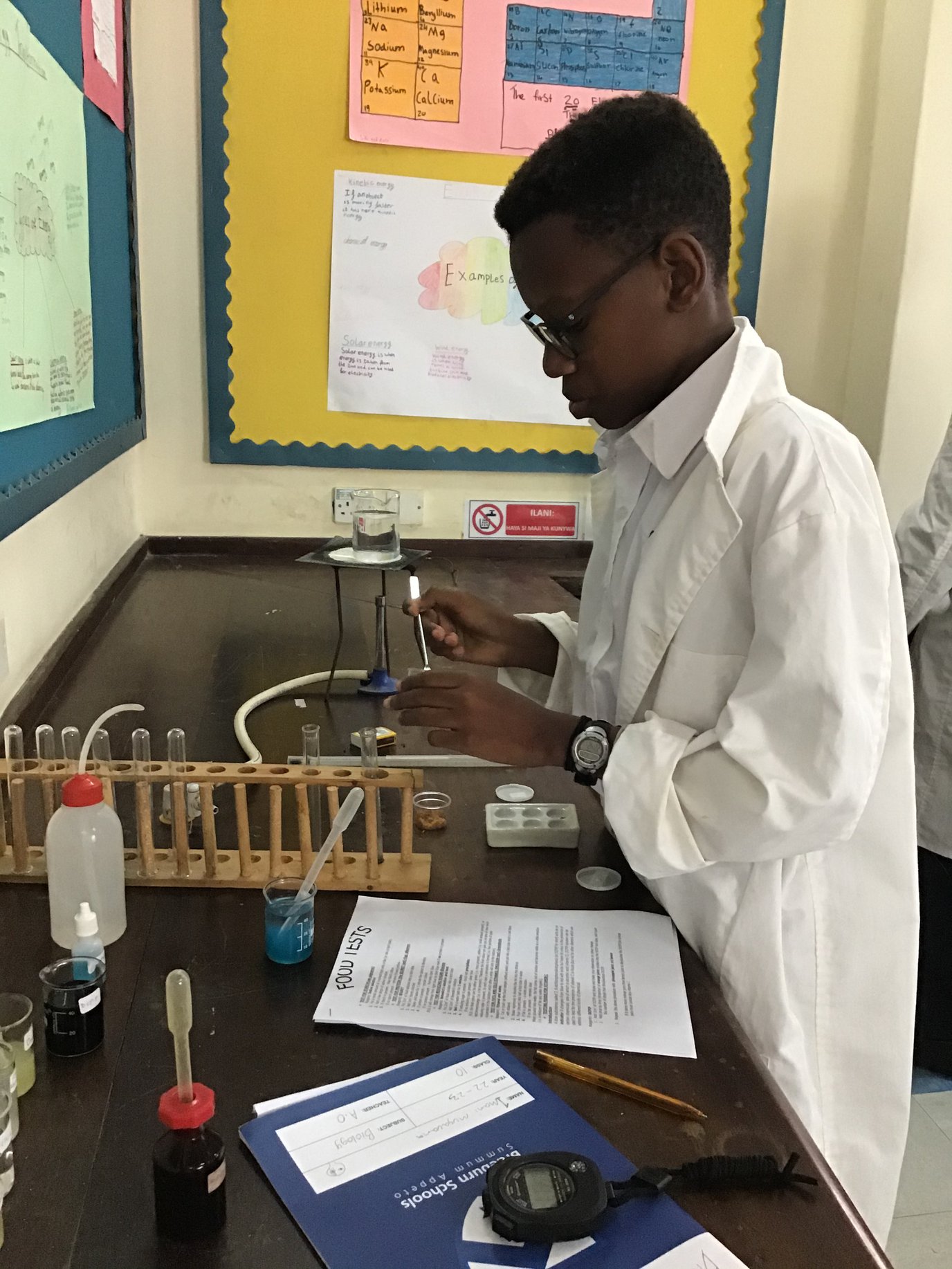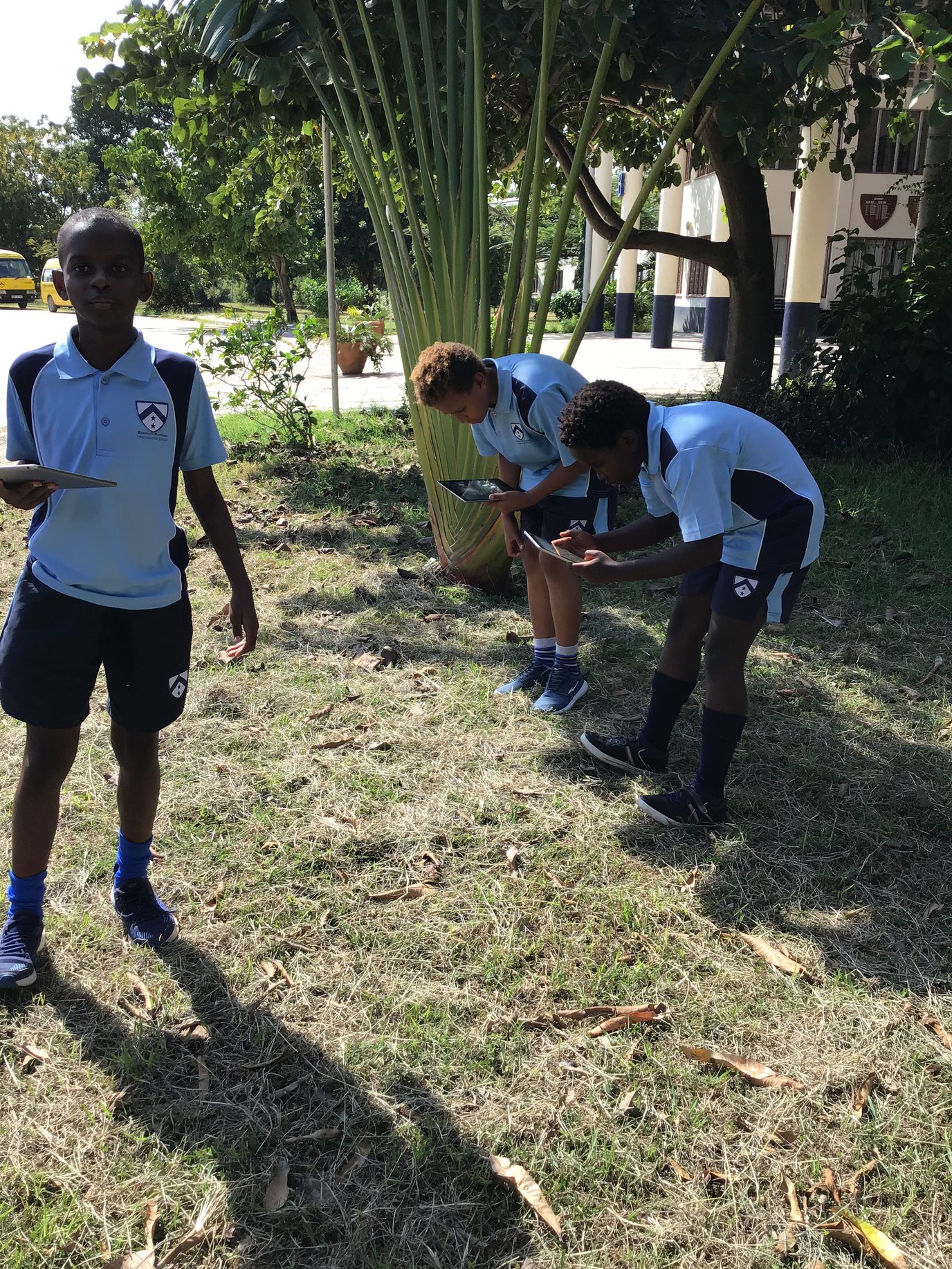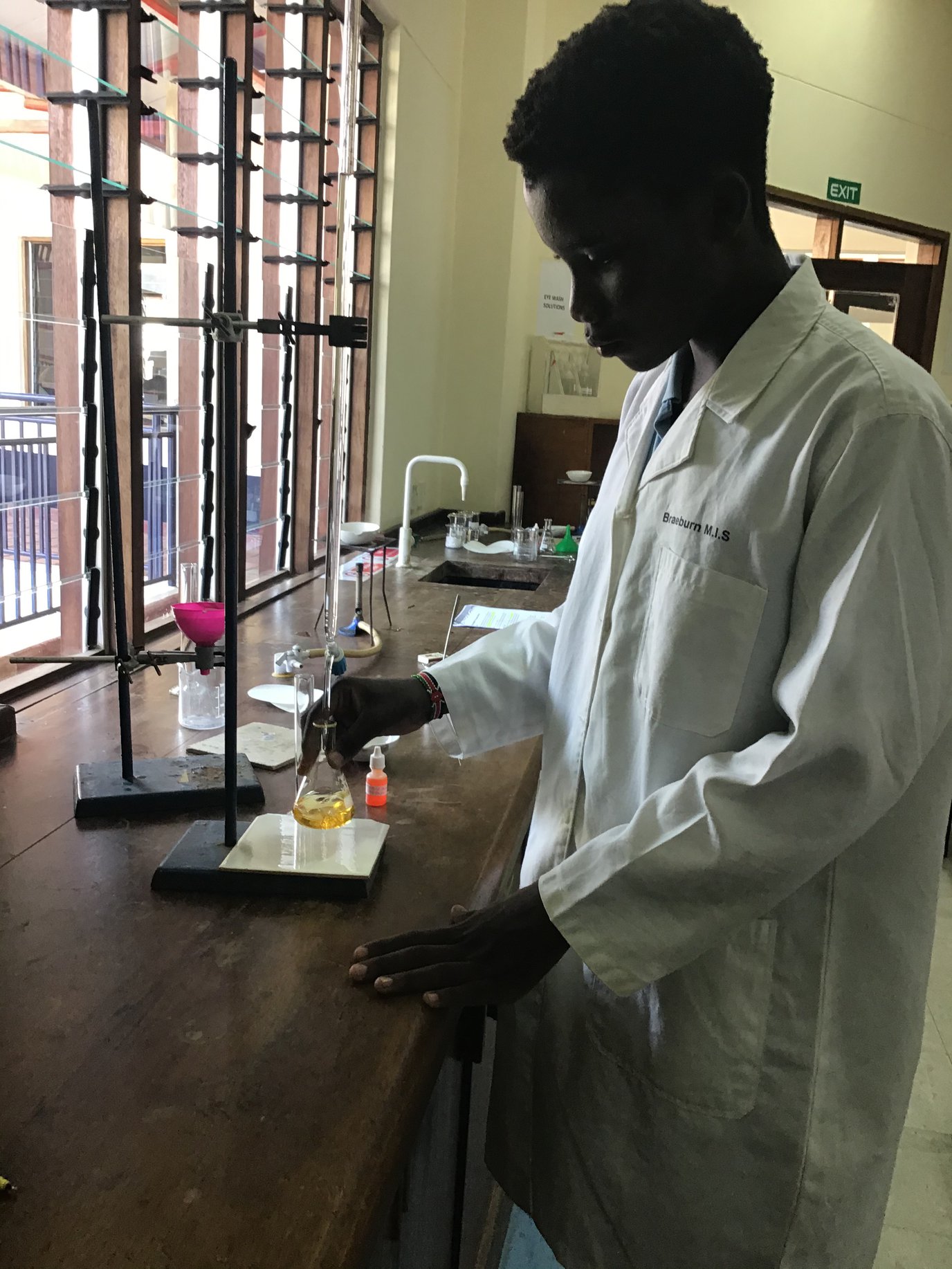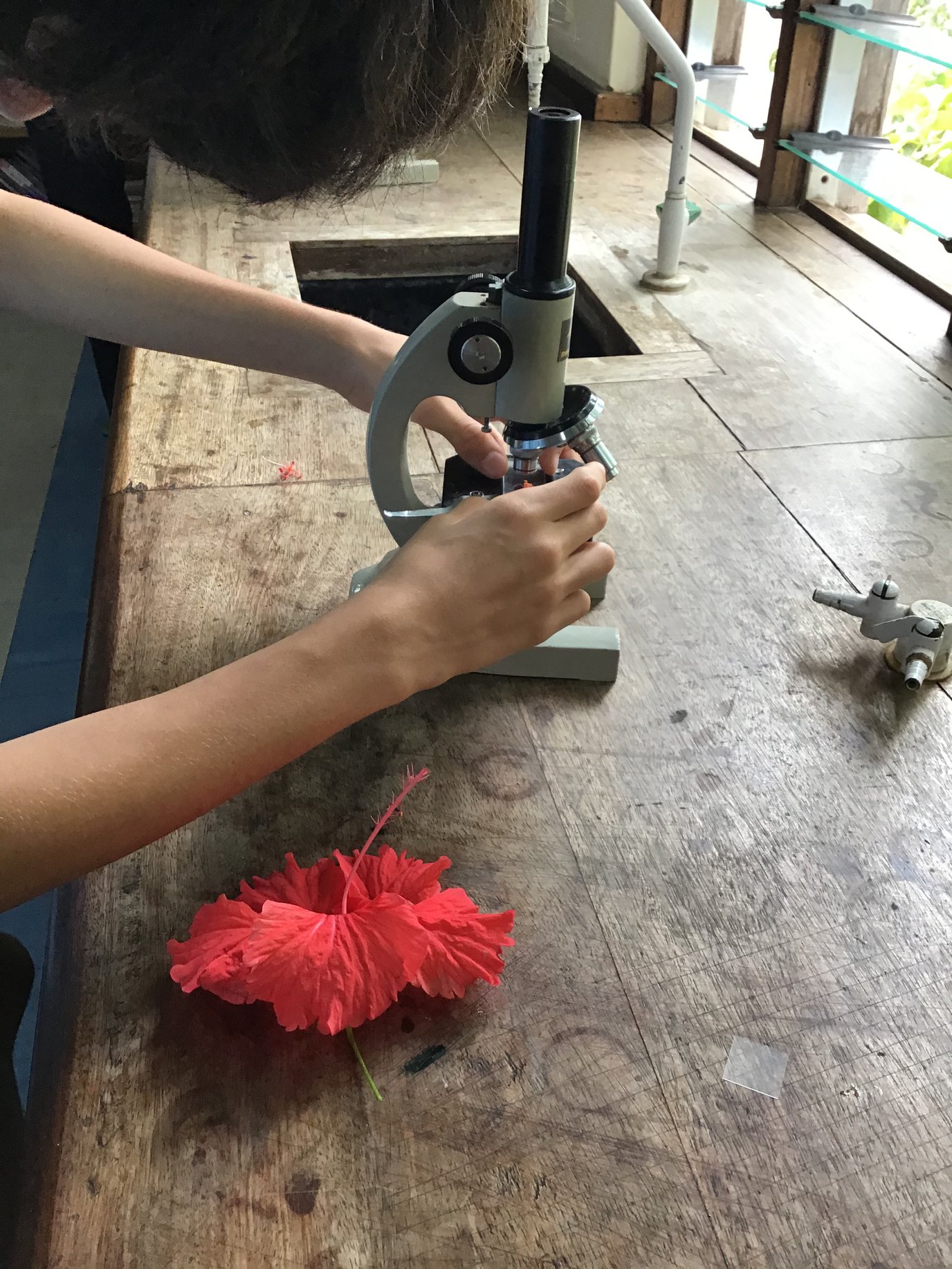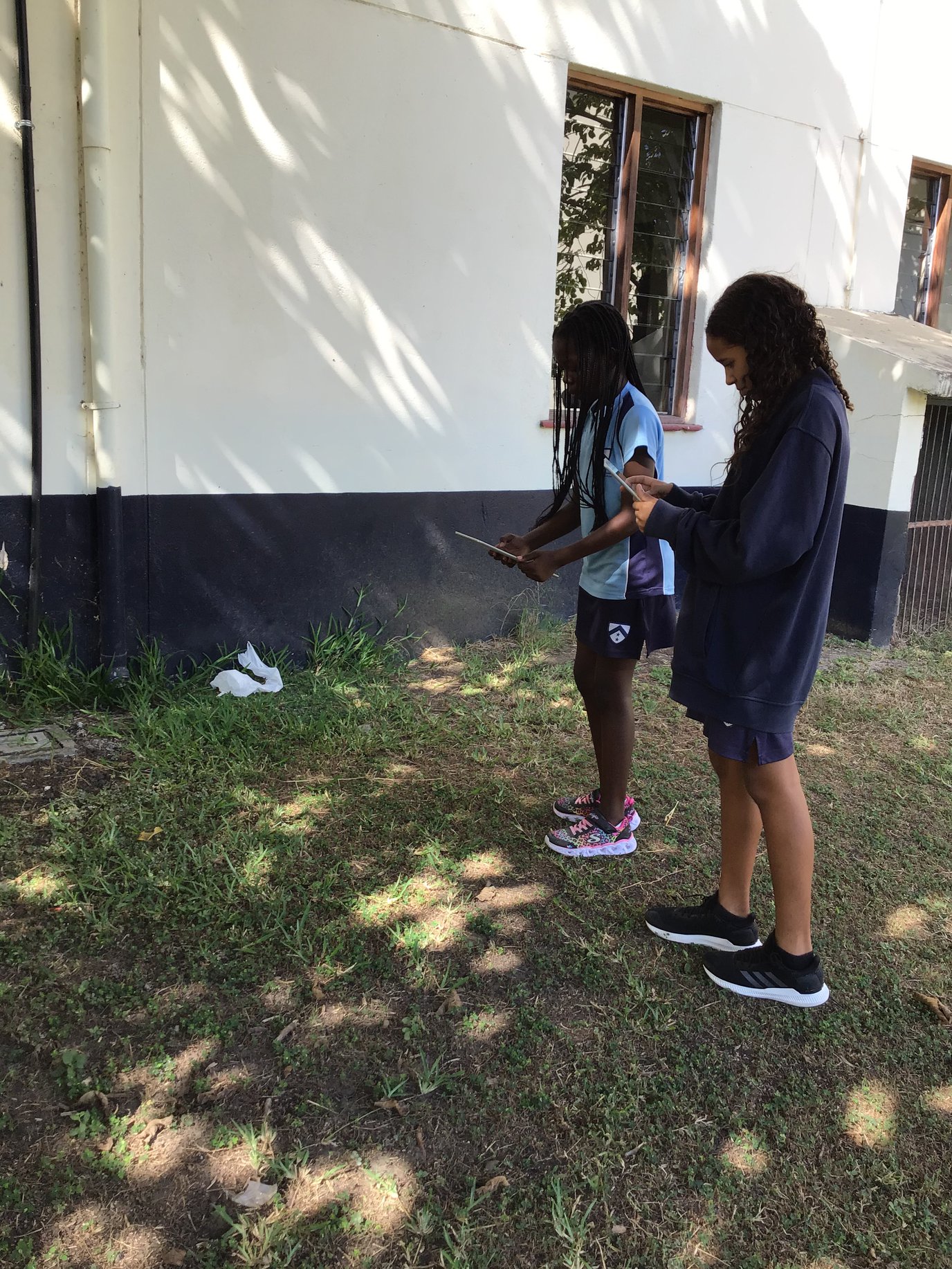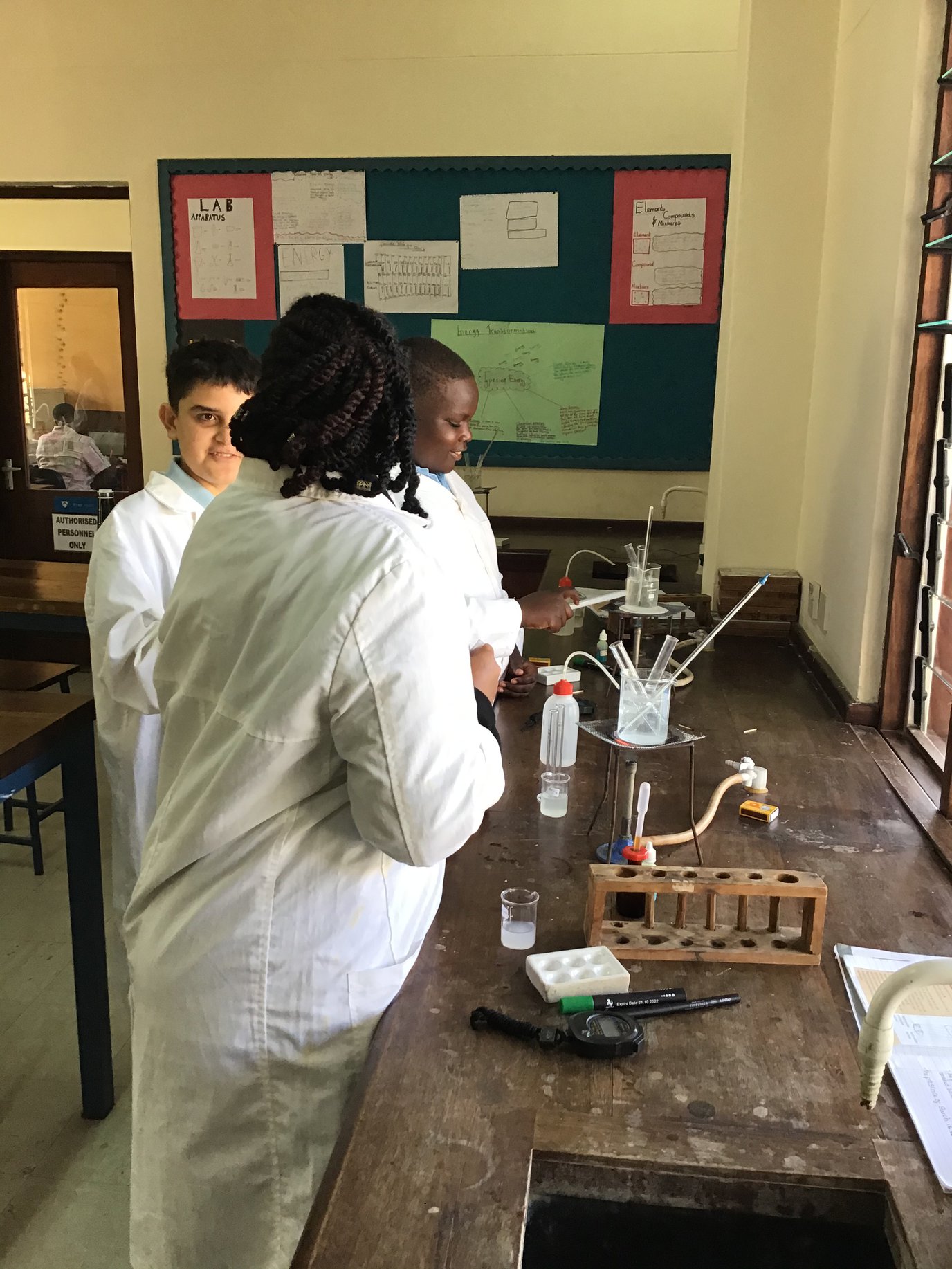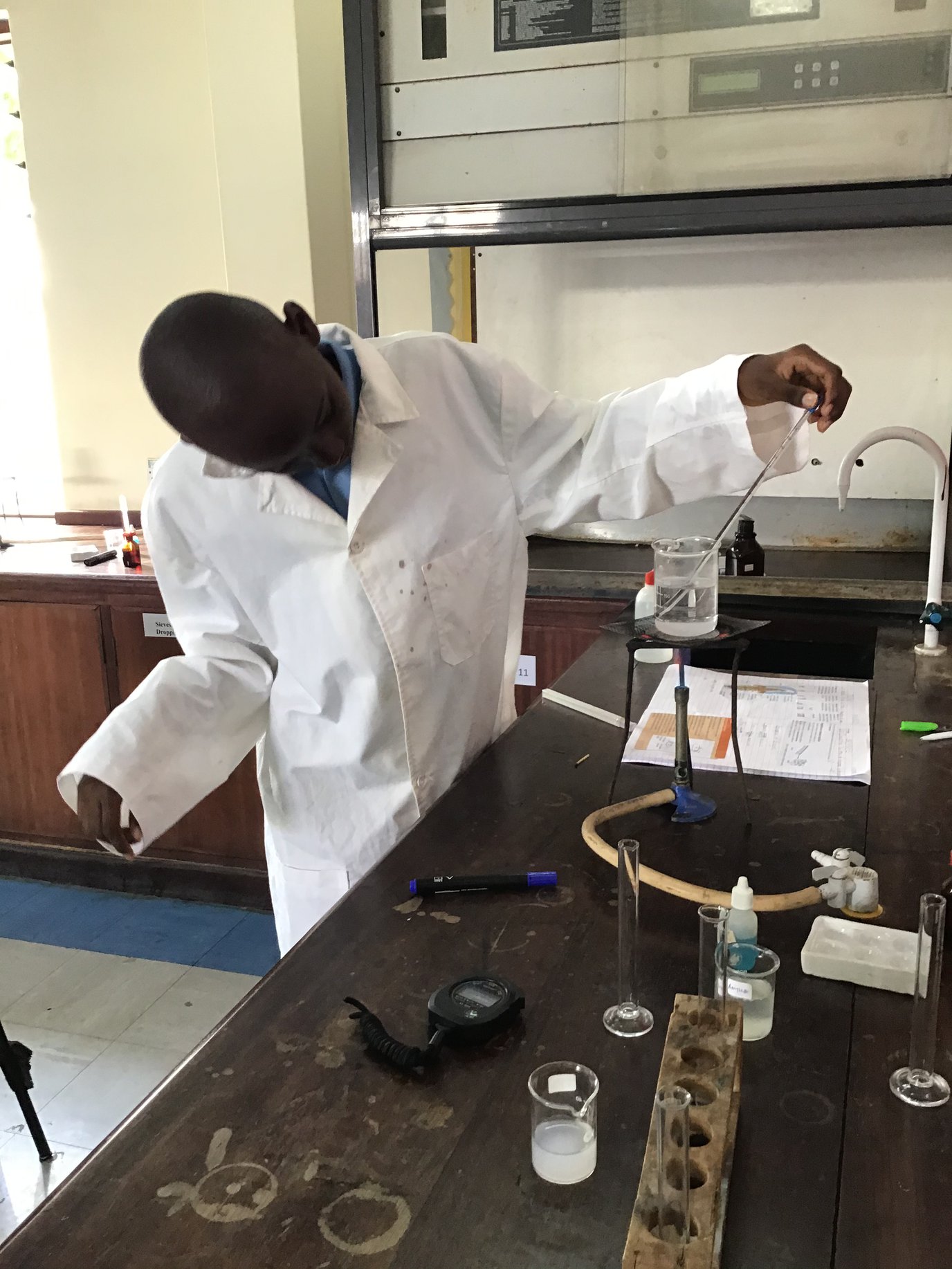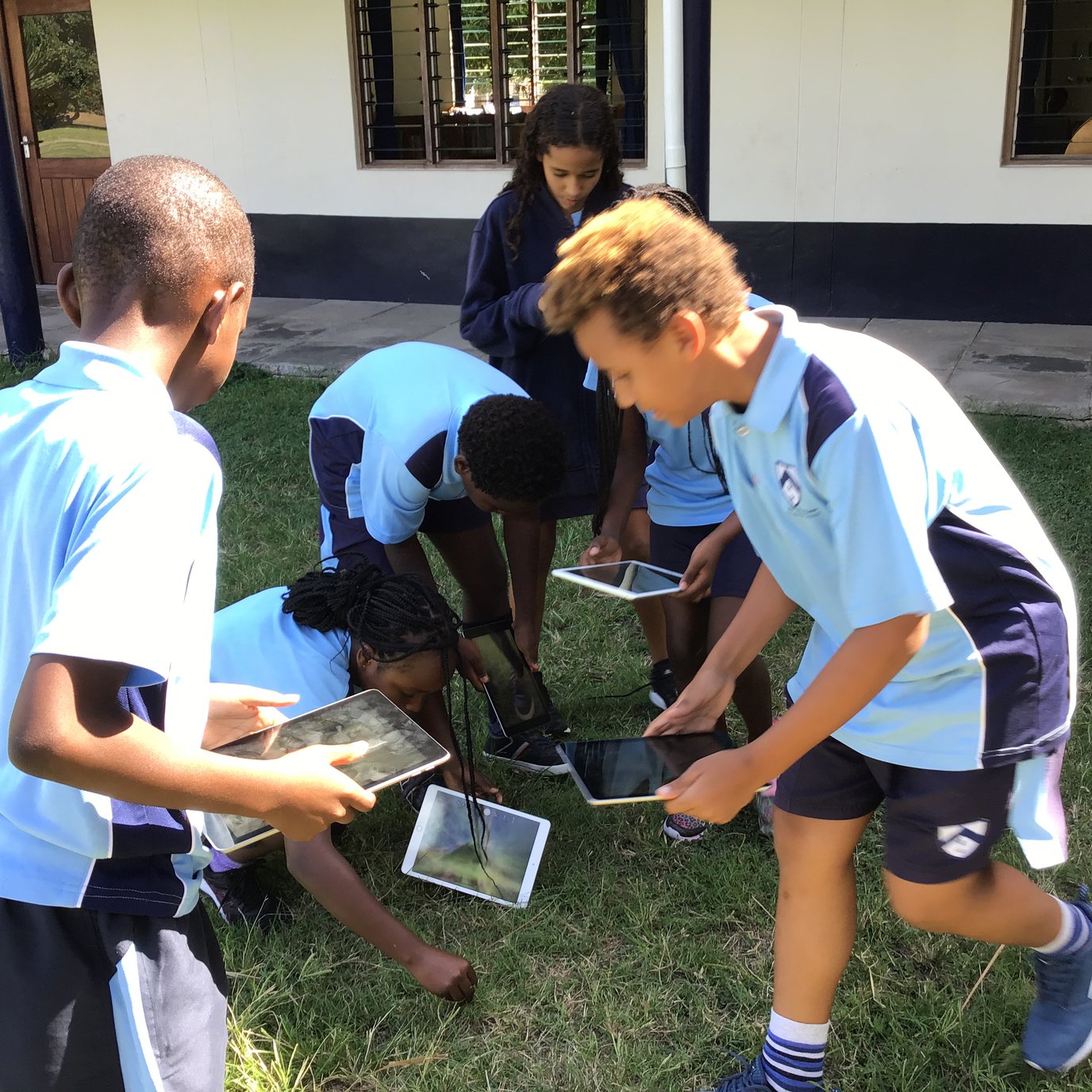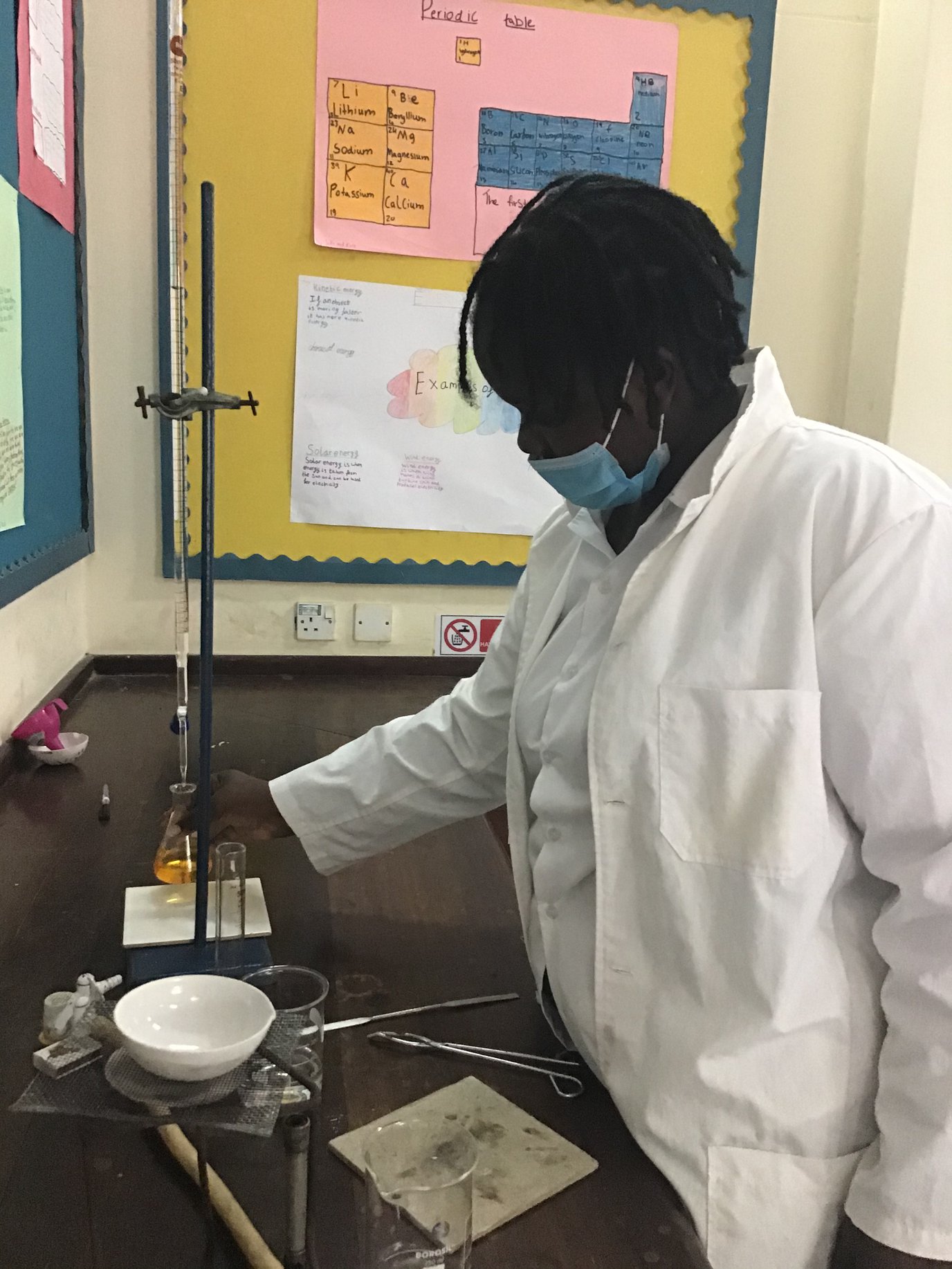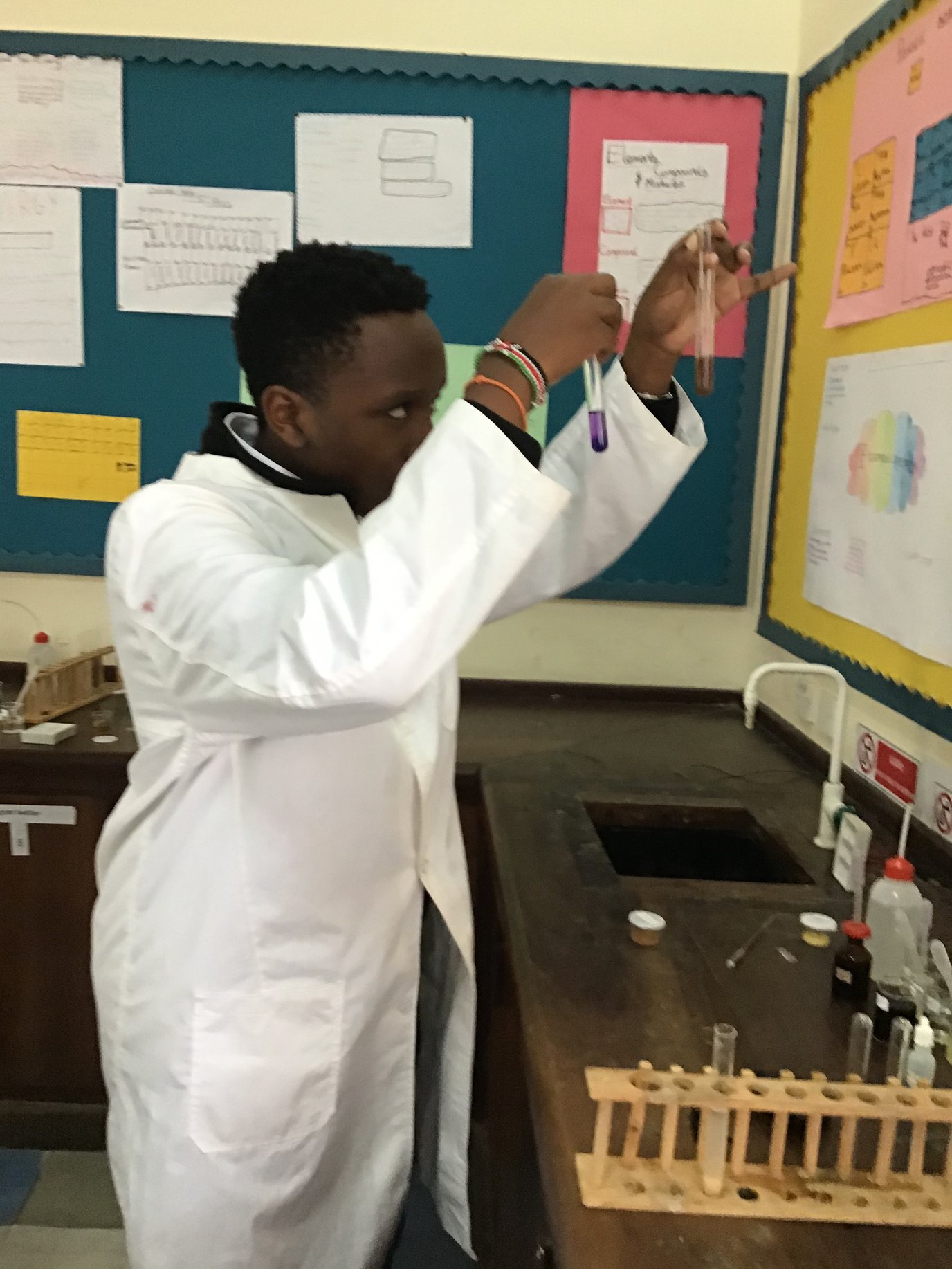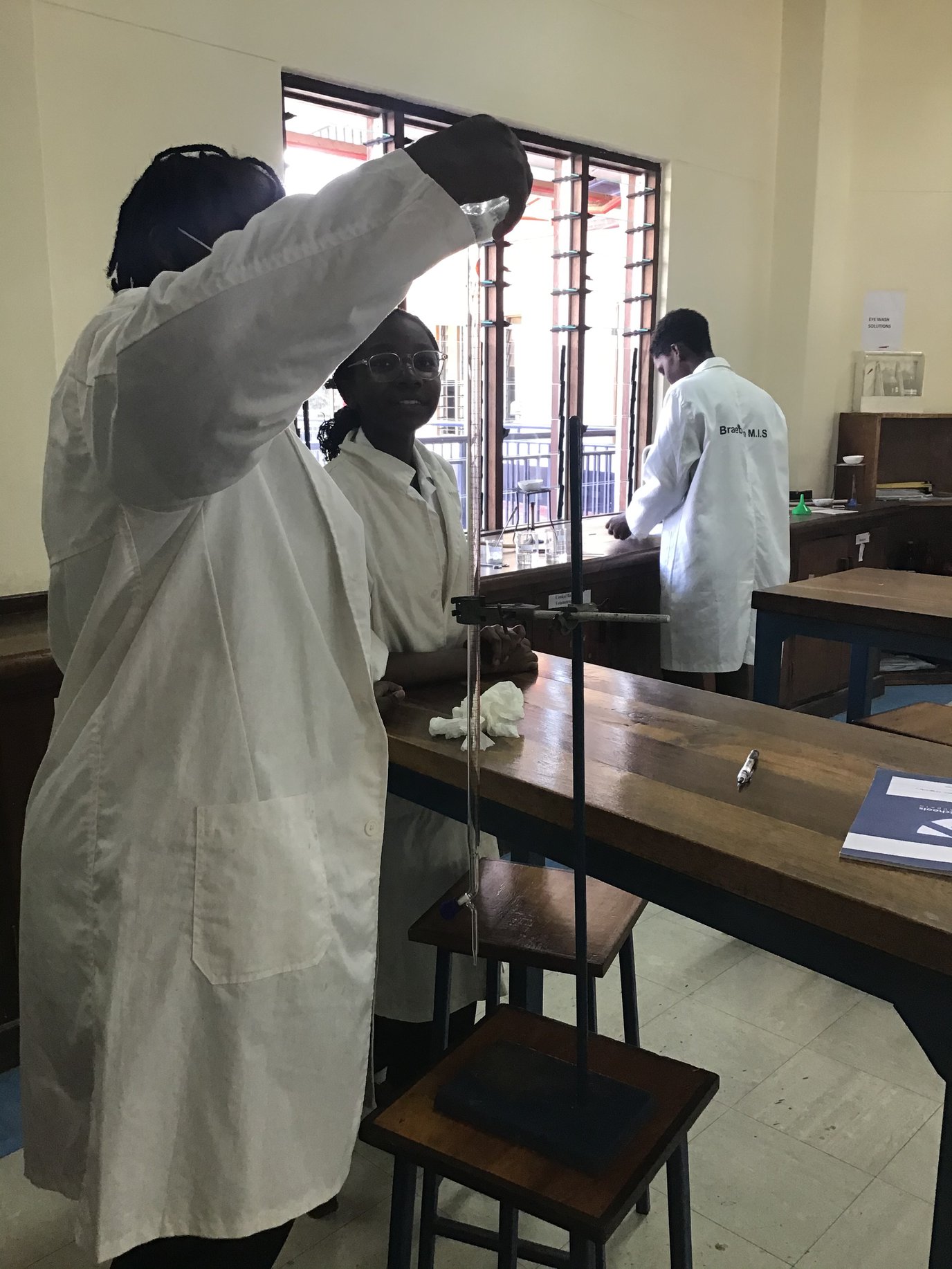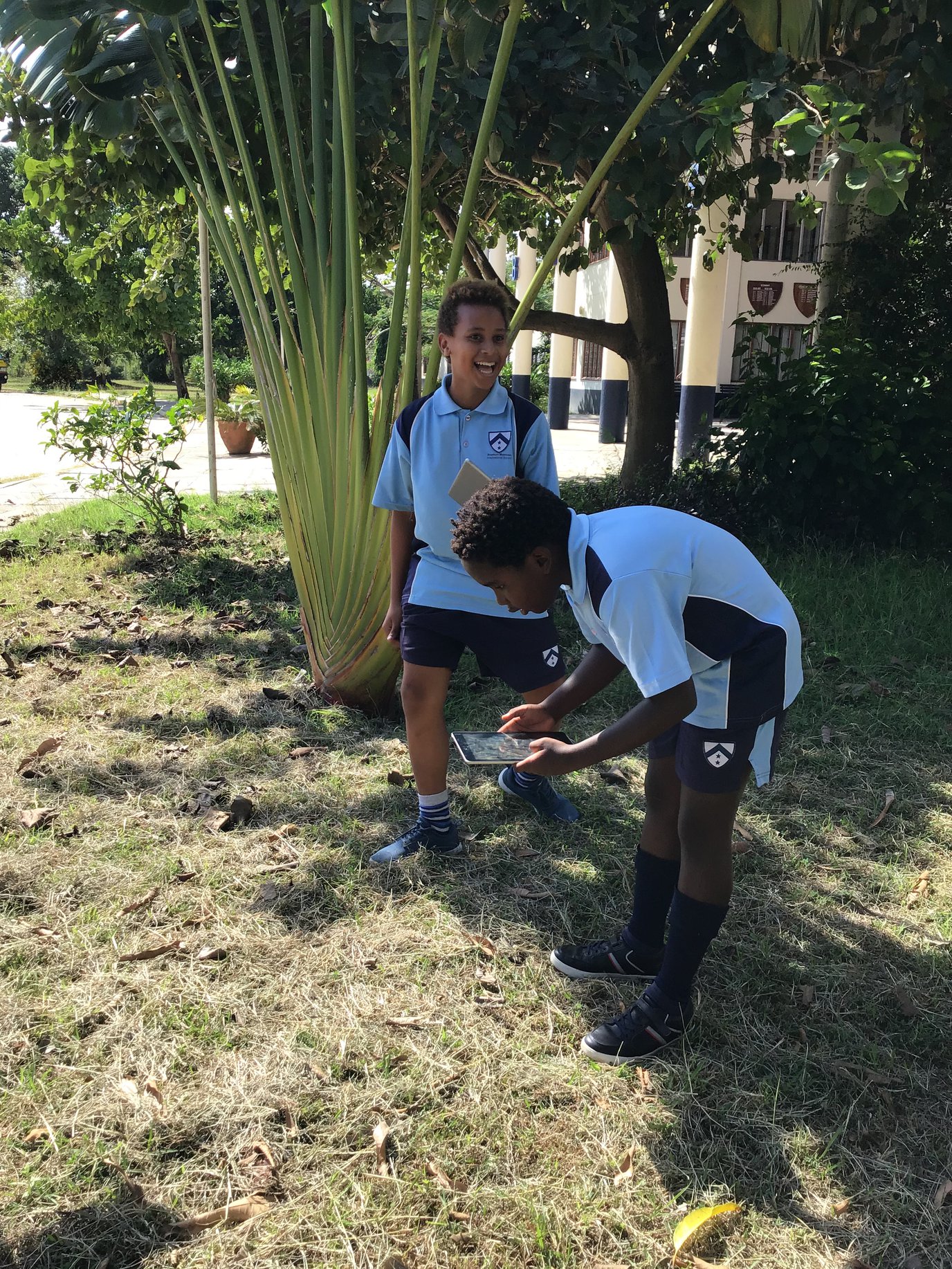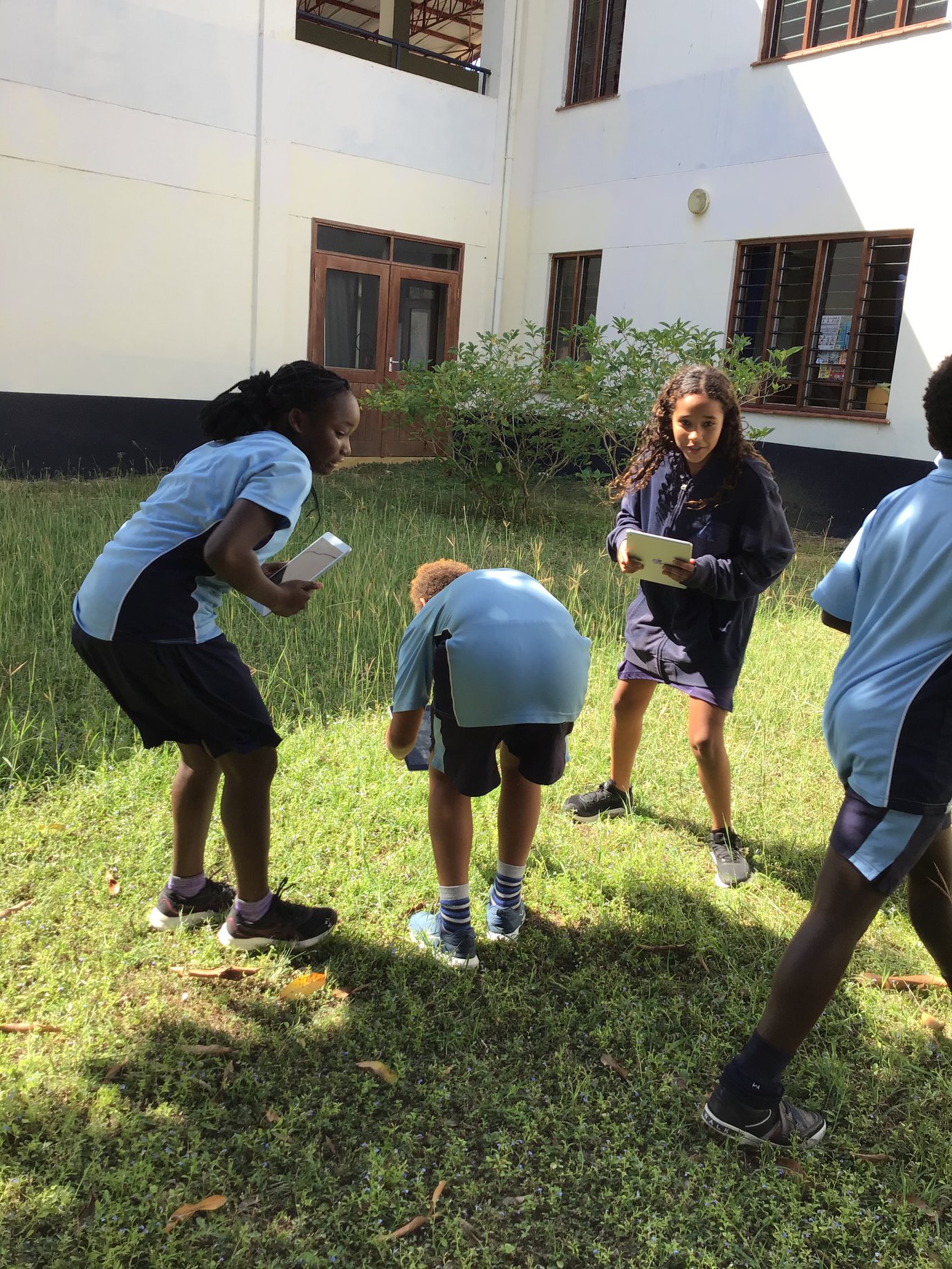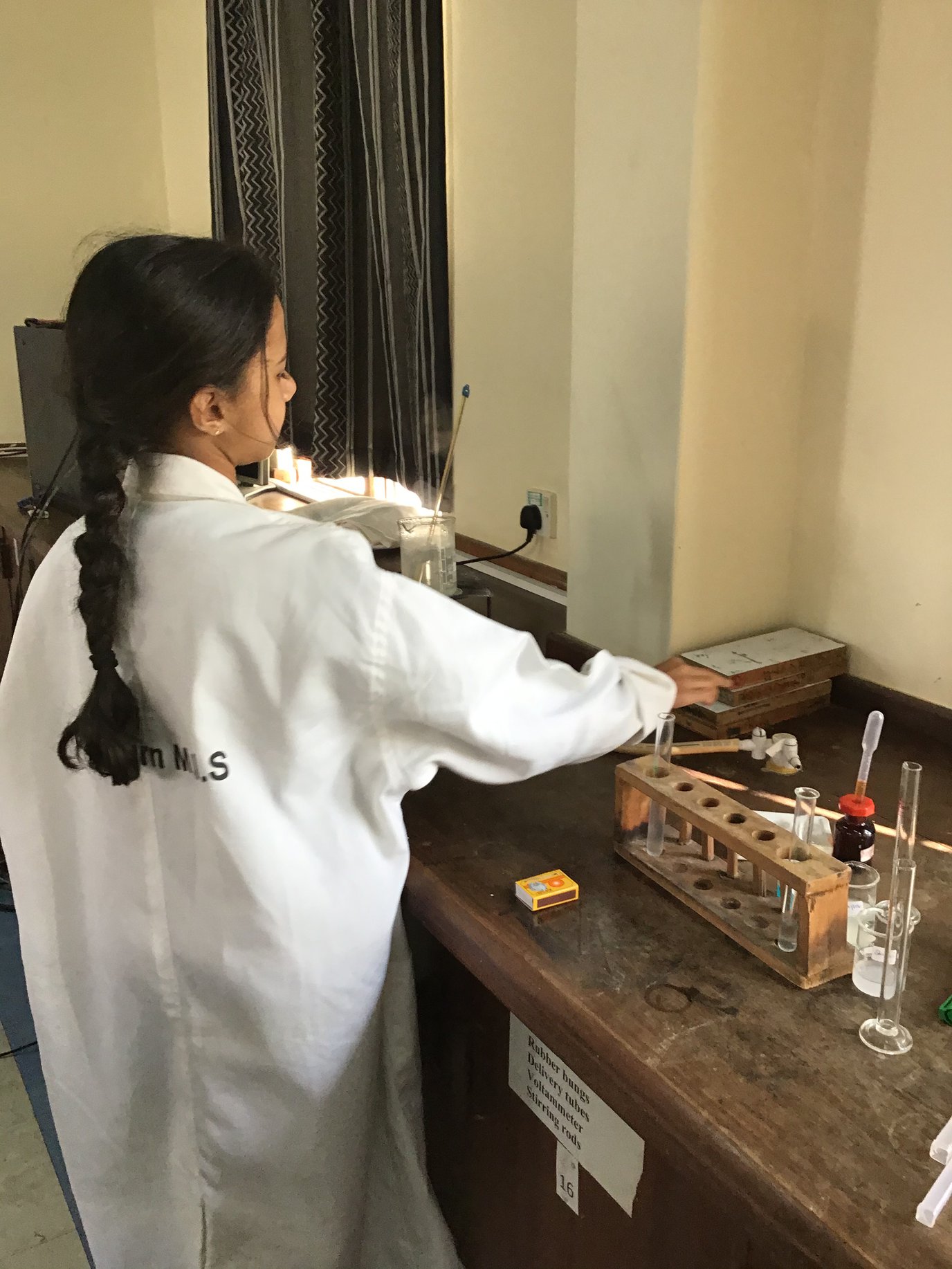Secondary Science News
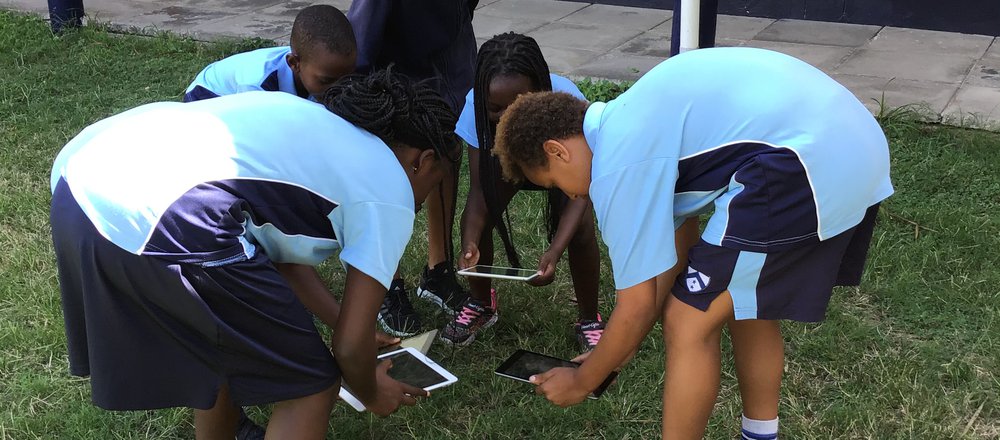
29th September 2022
Year 10 students carried out food tests for various groups of foods. The aim of this experiment was to investigate the use of chemical reagents to identify starch, reducing sugars, proteins and fats.This involved adding a reagent to a food sample which changes colour depending on what biological molecules are present. Some of the foods were crushed and students had to add water to some before adding the reagent .
Year 8 students conducted an experiment on enzymes, which is a substance that acts as a catalyst in living organisms and regulates the rate at which chemical reactions proceed without itself being altered in the process. They investigated amylase activity on starch.They later tested the products by using iodine for starch test and benedict's solution, for sugar test.
Year 7 students had a field work experiment, where they looked at and took pictures of invertebrates which were discussed in class thereafter. They also looked for different plants around the school, and identified their features. This was a group activity that enhanced teamwork and collaboration.
Year 11 students prepared salts in the laboratory using chemicals. Salts can be prepared from several methods which depend on whether the salts are soluble or not. They prepared soluble salts and insoluble salts. Insoluble salts are created by precipitation reactions where solutions of two soluble compounds are mixed. The insoluble product was separated by filtration.The salts were left by the window to cool and form crystals, which students observed and analysed, drawing conclusions on the experiment.
Year 9 students took a field trip to collect flowers. They observed the parts of the flowers using a magnifying glass and later separated them into different parts, which they stuck in their books and secured using sellotape. They dissected the flowers and observed the ovary, stigma, and style with a magnifying glass. Students then used the microscope to look through the pollen grains they had collected.
Mrs Okech
